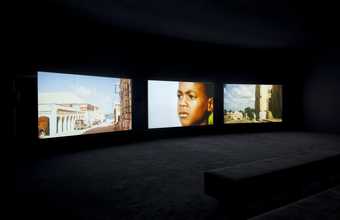
Sir John Akomfrah CBE, The Unfinished Conversation 2012. Tate. © John Akomfrah / Smoking Dogs Films.
Sixty Years: The Unfinished Conversation
Explore the evolving nature of diasporic identity through art from °Õ²¹³Ù±ð’s collection
Diaspora identities are those which are constantly producing and reproducing themselves anew, through transformation and difference.
Stuart Hall
The term diaspora comes from an ancient Greek word meaning ‘to scatter’. Today it refers to people who have migrated from one part of the world to another, or come from families who have. This is true in one way or another of all of the artists included. The renowned cultural studies theorist Stuart Hall saw identity as being full of endless possibilities. Rooted in this outlook, Sixty Years: The Unfinished Conversation seeks to present a sense of pluralism, that all identities, beliefs and differences are accepted, respected and ongoing. Based around John Akomfrah’s film work about Hall, the display features works which defy predetermined or fixed notions of diasporic identity. This draws upon Hall’s ideas that our cultural identity is a matter of ‘becoming’, rather than simply ‘being’. The central idea in this display is that identities of ethnicity, gender, sexuality and class do not function around a singular axis of ‘difference’ and are instead constantly undergoing transformation. Rather than presenting diasporic cultures and identities as binding or singular, they are presented as complex unfinished conversations.
Collective memory and networks forged within and across diasporic groups are an important part of the connections between the artists featured here. Even where ruling classes and dominant cultures have the power to impose restricted world views, people and communities still find a way to express themselves in a way that is true to their own individual understanding of the world.
There is no singular order or chronology to the display. You are invited to make your own connections to and between the works: to look closely at what is distinctive in the subjects, as well as in the artworks themselves. Threads of thought connecting the artworks suggest themes such as migration, marginalisation, memory, kinship, celebration, healing and resilience. We hope you will discover meanings in many different ways, unsettling fixed narratives of nationhood and belonging and recognising that selfhood and identity can only come into existence through our relationships to others. Hall suggested that ‘The future belongs to the impure. The future belongs to those who are ready to take in a bit of the other, as well as being what they themselves are.’
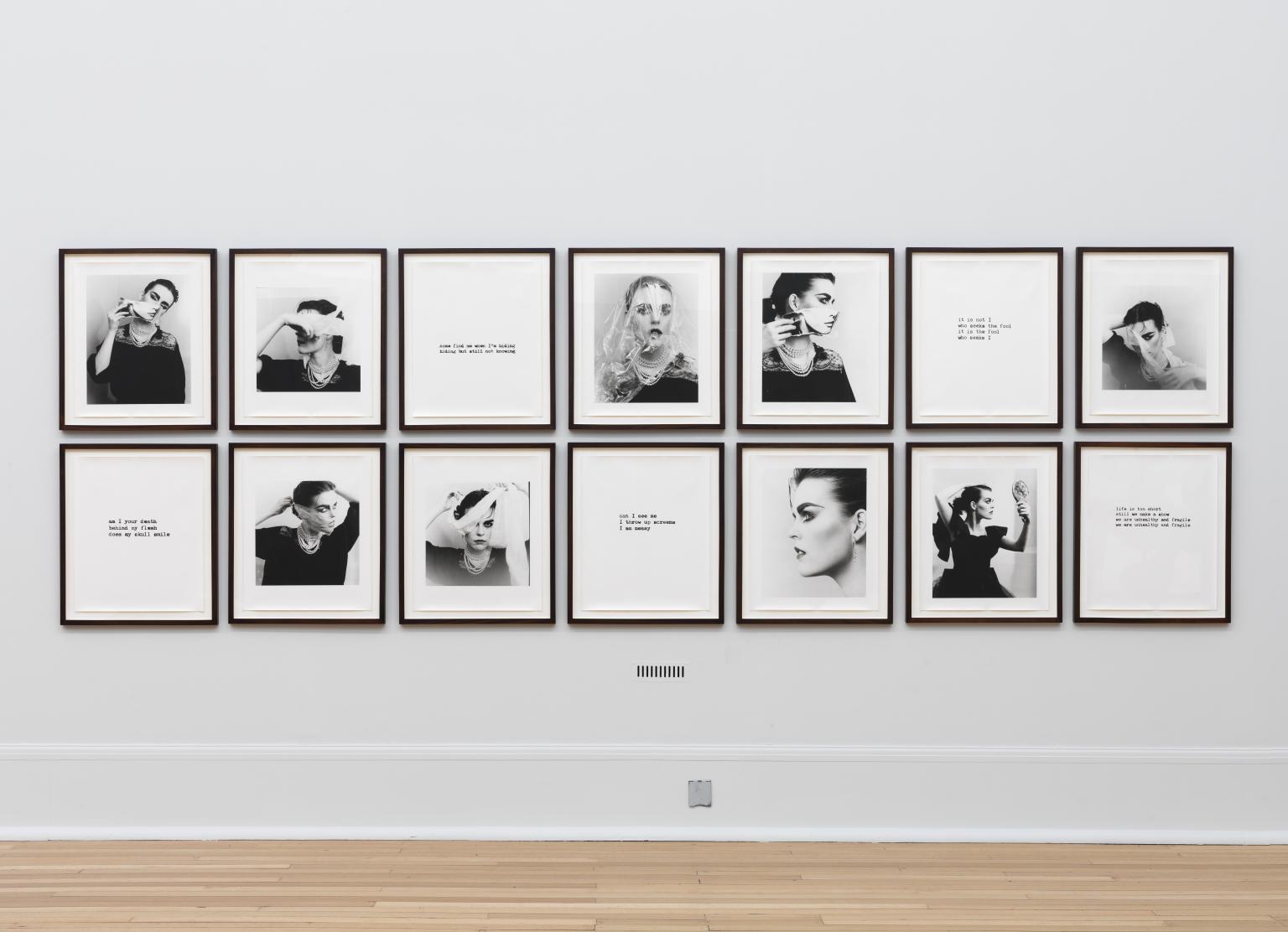
Linder, She/She 1981, printed 2007
She/She consists of fourteen black and white photographs, nine of which are portraits of Linder and the remaining five are photographs of short sections of text written in a typewriter font. The prints are presented in black frames, usually displayed in two horizontal rows of seven to be viewed in the sequence top row left to right, bottom row left to right, with the text pages interspersing the portraits. The photographs of Linder are by the Swiss photographer Christine Birrer, with whom Linder collaborated at this time on a number of different projects. The work was first produced in a booklet Pickpocket: SheShe 1981 to coincide with the release of a six-track cassette tape, Pickpocket, by the group Ludus, of which Linder was a member. The booklet format was slightly different to that originally conceived, and as it has now been printed and editioned. The fragments of text are written by Linder and taken from three of the songs on the cassette, Mutilate, The Fool and Mouthpiece. They refer to the themes of hiding, searching and finding evoked in the images.
1/30
artworks in Sixty Years: The Unfinished Conversation
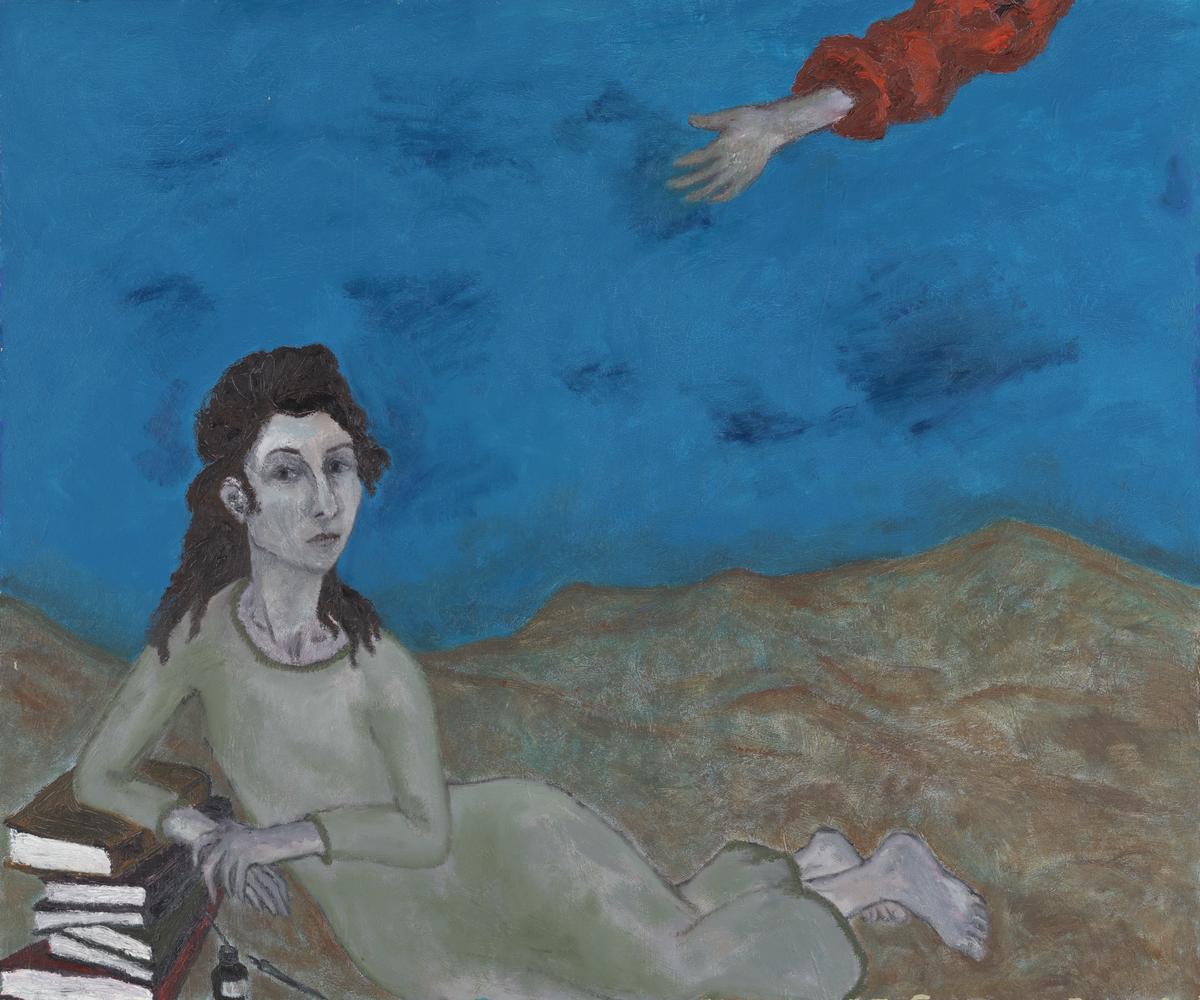
Partou Zia, 40 Nights and 40 Days 2008
40 Nights and 40 Days 2008 is a large painting in oil on canvas that shows an awkwardly reclining grey figure wearing a simple dress, gazing contemplatively out to her left. Her elbow is supported by a small stack of books, next to a pen and ink pot. The figure is lying on an uneven brown and grey ground beneath a vivid blue sky that dominates the upper half of the composition. A grey arm and hand in a loose red sleeve reaches down from the top edge. The figure is likely to be a self-portrait of the artist Partou Zia. Self-portraits were a particularly important aspect of Zia’s work in expressing her identity as a woman and painter. They also reflected her ongoing interest in the intuitive, spirituality and the development of self-knowledge. The title 40 Nights and 40 Days is a reversal of ‘40 Days and 40 Nights’, referencing multiple biblical stories. These include: forty days and nights of rain sent by God to destroy the earth (Book of Genesis); the period of time Moses was on Mount Sinai when he received the Ten Commandments from God (Book of Exodus); and the time Jesus spent fasting alone in the Judaean desert (Gospel of St Matthew). This work was painted in the final year of Zia’s life and was one of her last paintings. The application of oil paint in 40 Nights and 40 Days is more even and opaque than in earlier works by the artist, such as Flowering Rod 2006, also in °Õ²¹³Ù±ð’s collection (Tate T15994).
2/30
artworks in Sixty Years: The Unfinished Conversation
Lubaina Himid CBE RA, H.M.S. Calcutta 2021
H.M.S. Calcutta 2021 is an acrylic painting on canvas that depicts two women onboard a ship, looking outwards onto the sea. One woman leans against the railing of the deck; she holds a fan open in a gesture which, according to the artist, means ‘do not betray our secret’. Her travel companion stands by her side. She wears a long green skirt that aids the spatial complexity of the composition: a chair partially appears to rest on the skirt; a small bubble floats nearby; a green form resurfaces in the water – perhaps a continuation of the dress – and suggests a connection with the landforms that surround the voyagers on their journey.
3/30
artworks in Sixty Years: The Unfinished Conversation
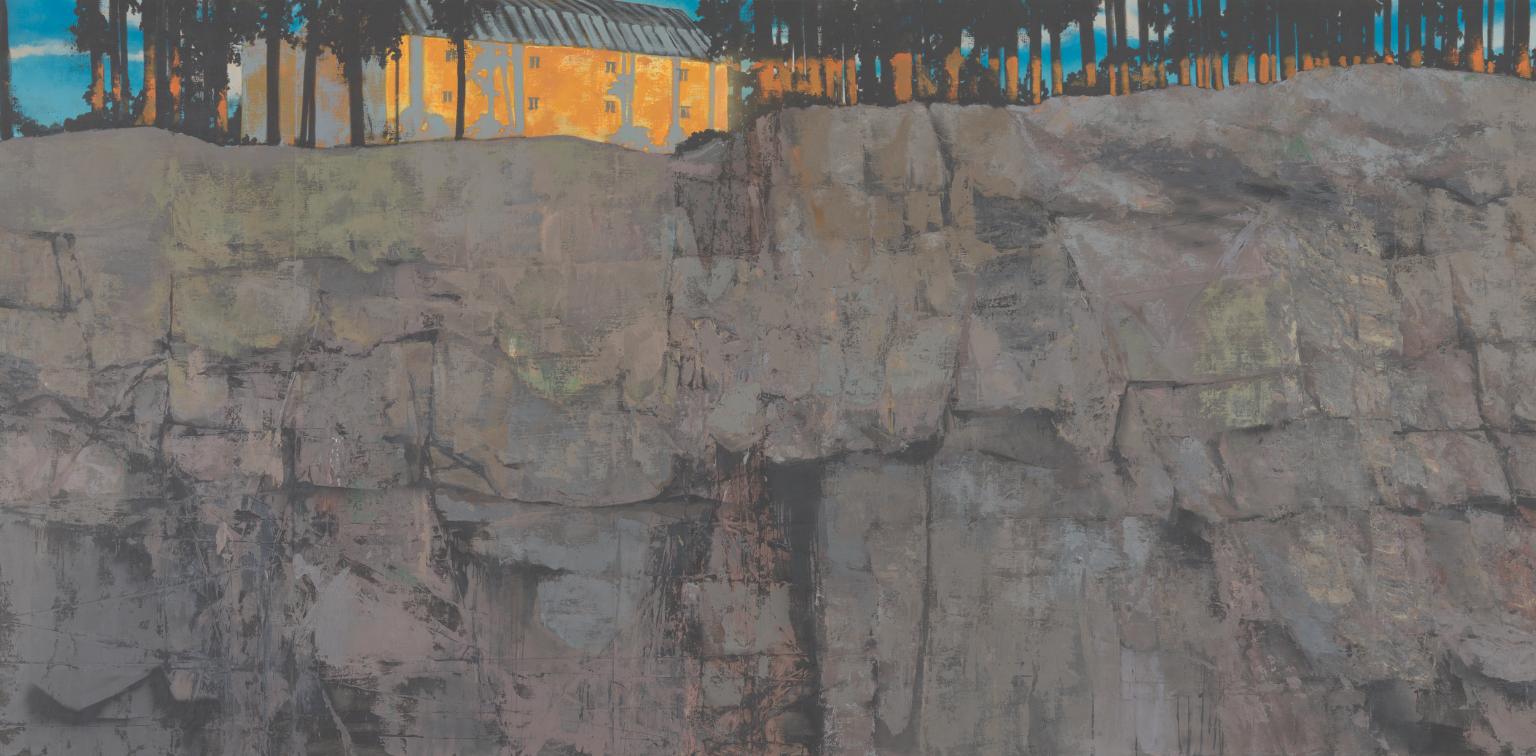
Mohammed Sami, Refugee Camp 2022
4/30
artworks in Sixty Years: The Unfinished Conversation
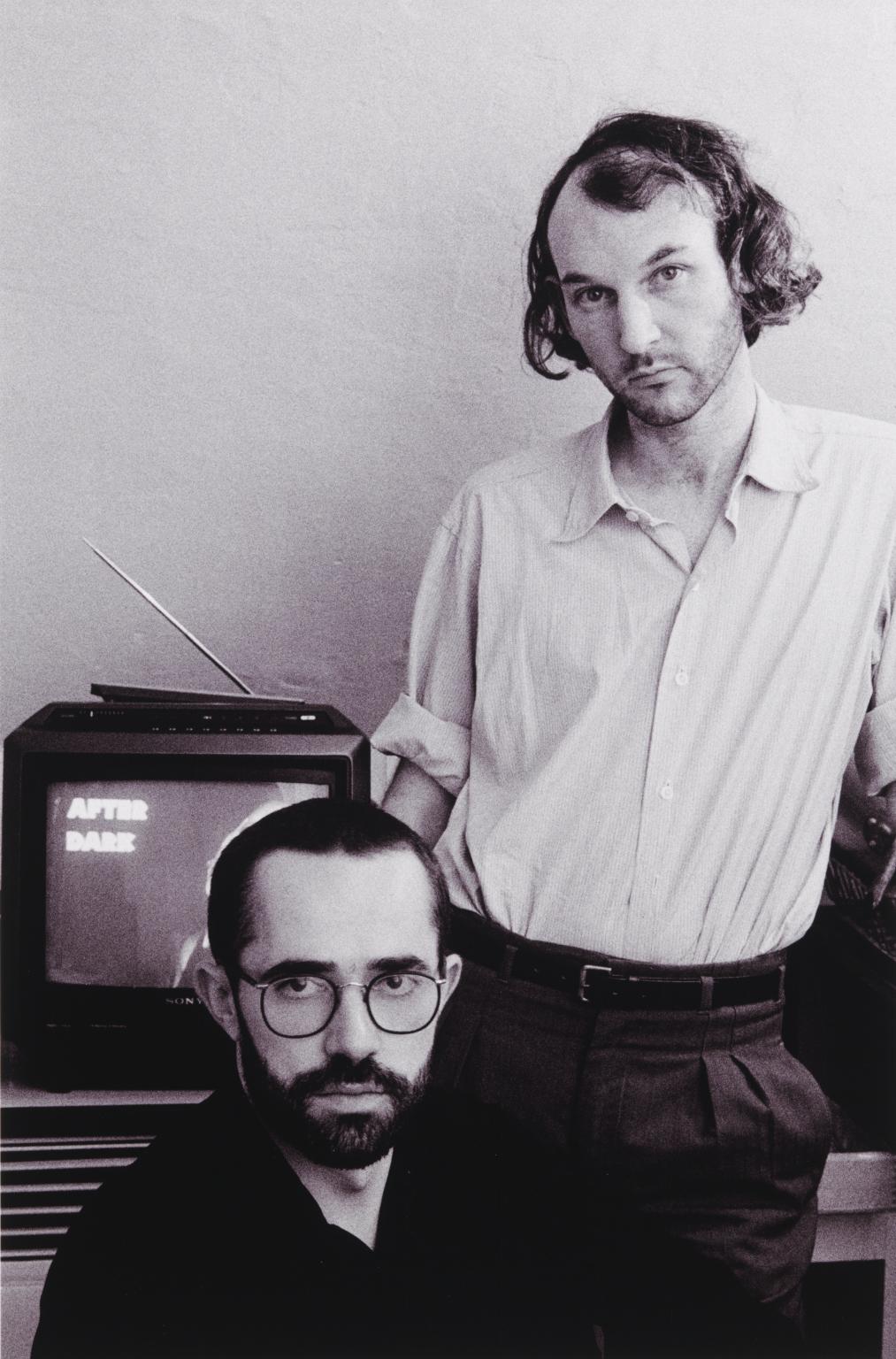
Sunil Gupta, Guy & Brian, London 1984, printed 2018
This series of black and white portraits features gay and lesbian couples from Sunil Gupta’s social circles in London and Newcastle. Called Lovers: Ten Years On, the project was shot over a period of two years from 1984–6, following the end of Gupta’s own ten-year relationship. Reminiscent of traditional family portraits, the photographs show couples in affectionate poses in their own living spaces. Prejudicial coverage of the HIV and AIDS epidemic in the 1980s threatened to turn public opinion against the acceptance of queer relationships, which were portrayed as ‘sexually deviant’. In contrast to these offensive depictions of queer love, the people in Lovers: Ten Years On are often presented as quite ordinary, middle-class, professional couples. Many of the people photographed would later lose their lives to HIV and AIDS.
Gallery label, January 2025
5/30
artworks in Sixty Years: The Unfinished Conversation
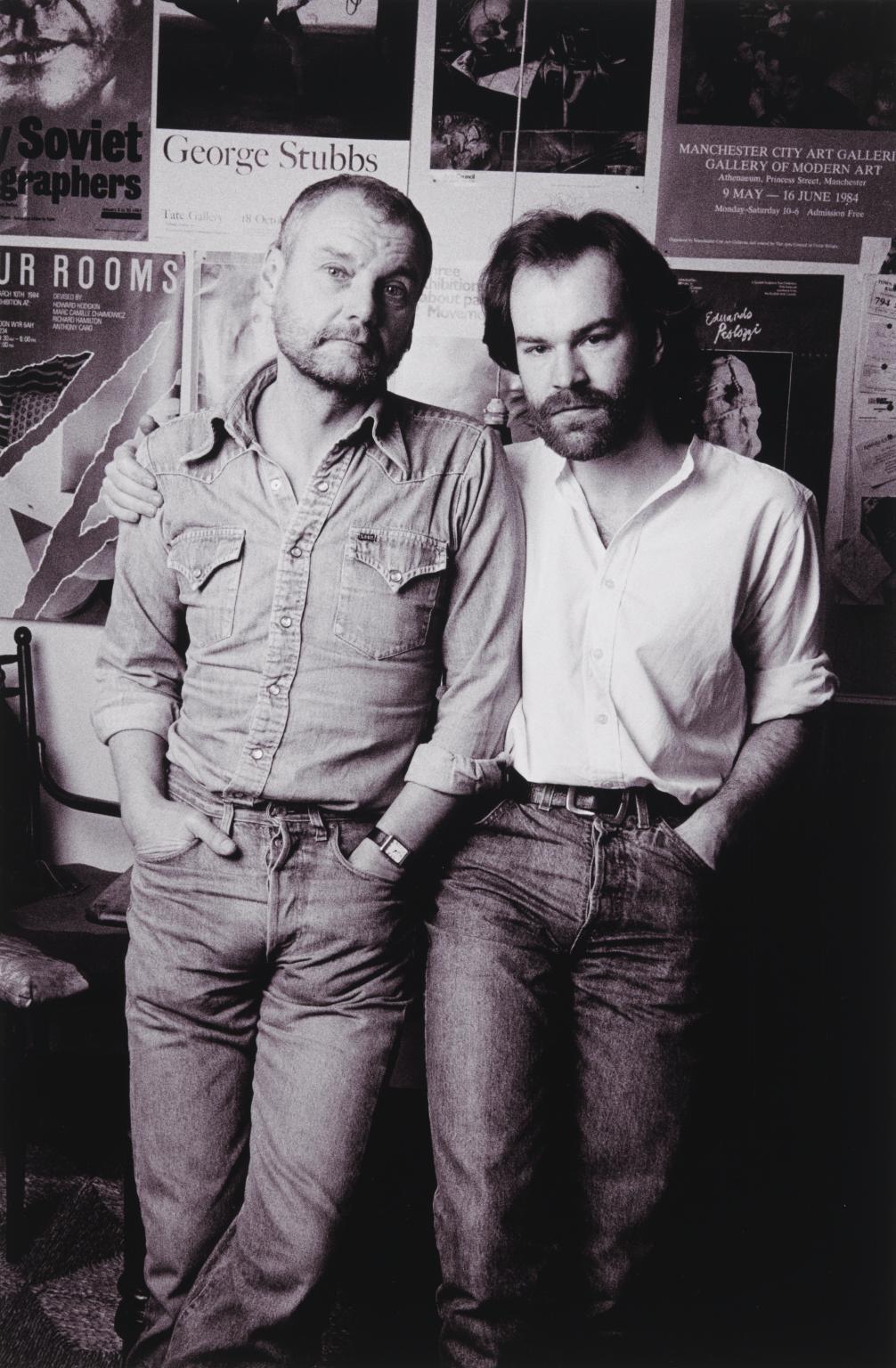
Sunil Gupta, Emmanuel & David, London 1984, printed 2018
This series of black and white portraits features gay and lesbian couples from Sunil Gupta’s social circles in London and Newcastle. Called Lovers: Ten Years On, the project was shot over a period of two years from 1984–6, following the end of Gupta’s own ten-year relationship. Reminiscent of traditional family portraits, the photographs show couples in affectionate poses in their own living spaces. Prejudicial coverage of the HIV and AIDS epidemic in the 1980s threatened to turn public opinion against the acceptance of queer relationships, which were portrayed as ‘sexually deviant’. In contrast to these offensive depictions of queer love, the people in Lovers: Ten Years On are often presented as quite ordinary, middle-class, professional couples. Many of the people photographed would later lose their lives to HIV and AIDS.
Gallery label, January 2025
6/30
artworks in Sixty Years: The Unfinished Conversation
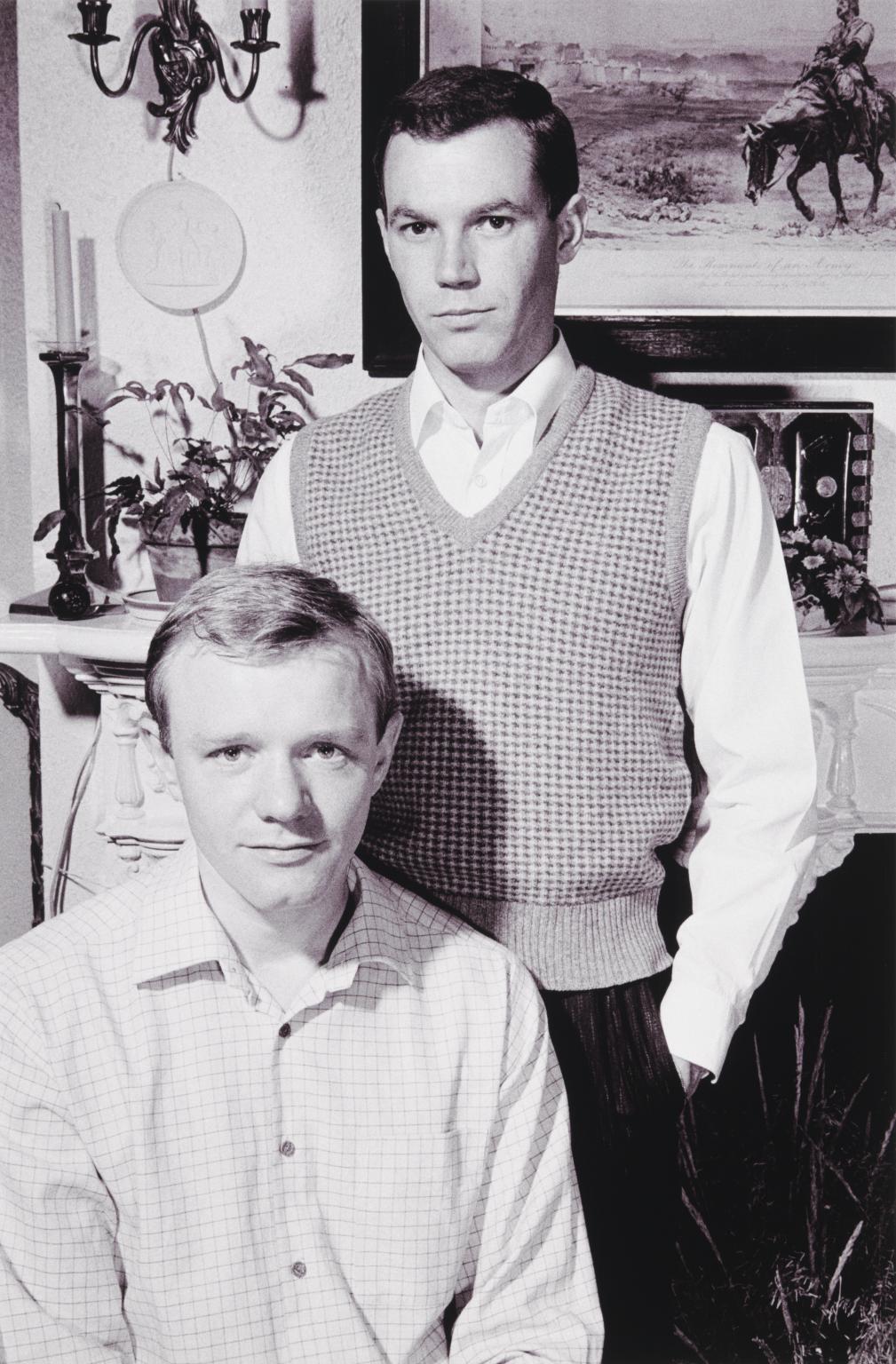
Sunil Gupta, Karl & Daniel, London 1985, printed 2018
This series of black and white portraits features gay and lesbian couples from Sunil Gupta’s social circles in London and Newcastle. Called Lovers: Ten Years On, the project was shot over a period of two years from 1984–6, following the end of Gupta’s own ten-year relationship. Reminiscent of traditional family portraits, the photographs show couples in affectionate poses in their own living spaces. Prejudicial coverage of the HIV and AIDS epidemic in the 1980s threatened to turn public opinion against the acceptance of queer relationships, which were portrayed as ‘sexually deviant’. In contrast to these offensive depictions of queer love, the people in Lovers: Ten Years On are often presented as quite ordinary, middle-class, professional couples. Many of the people photographed would later lose their lives to HIV and AIDS.
Gallery label, January 2025
7/30
artworks in Sixty Years: The Unfinished Conversation
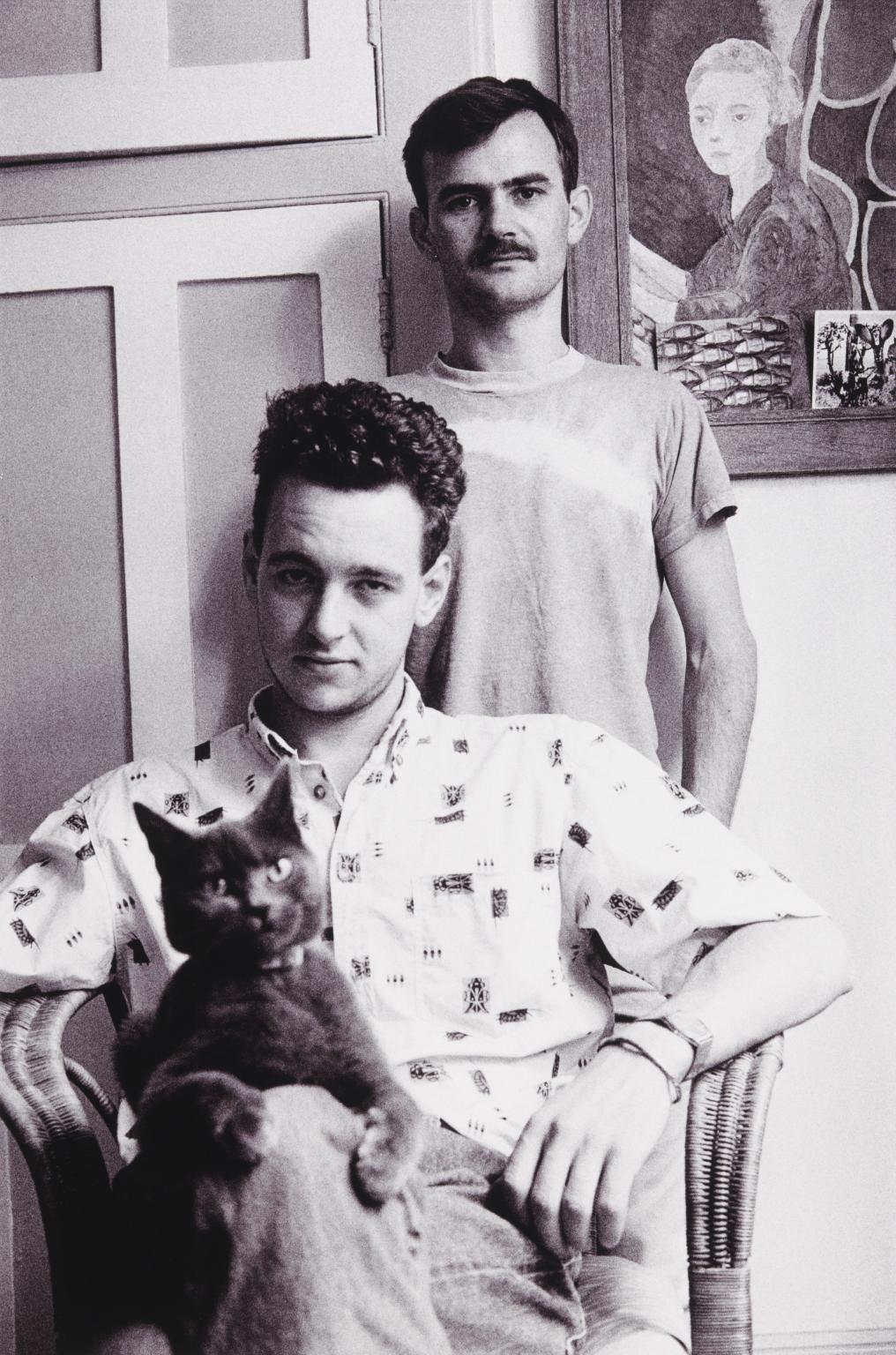
Sunil Gupta, Roger & Steve, London 1984, printed 2018
This series of black and white portraits features gay and lesbian couples from Sunil Gupta’s social circles in London and Newcastle. Called Lovers: Ten Years On, the project was shot over a period of two years from 1984–6, following the end of Gupta’s own ten-year relationship. Reminiscent of traditional family portraits, the photographs show couples in affectionate poses in their own living spaces. Prejudicial coverage of the HIV and AIDS epidemic in the 1980s threatened to turn public opinion against the acceptance of queer relationships, which were portrayed as ‘sexually deviant’. In contrast to these offensive depictions of queer love, the people in Lovers: Ten Years On are often presented as quite ordinary, middle-class, professional couples. Many of the people photographed would later lose their lives to HIV and AIDS.
Gallery label, January 2025
8/30
artworks in Sixty Years: The Unfinished Conversation
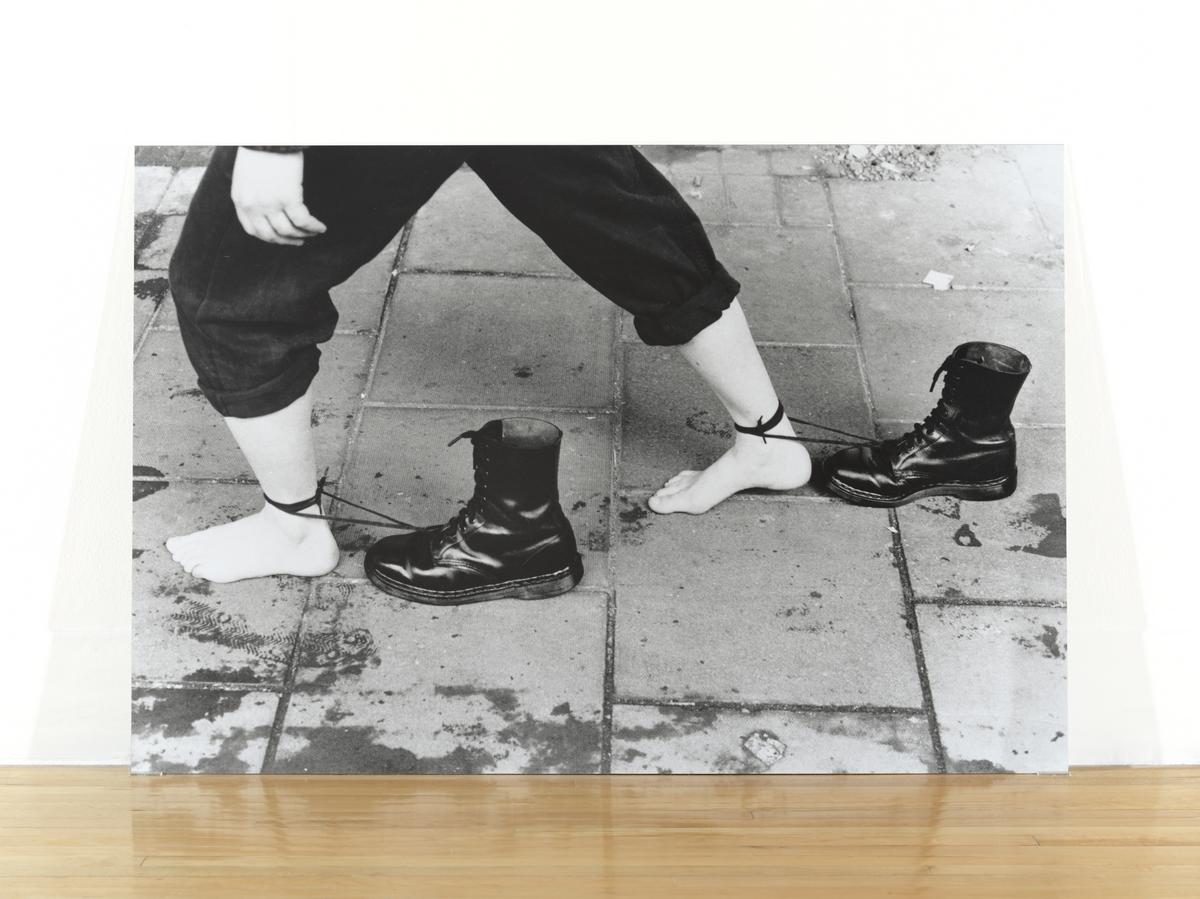
Mona Hatoum, Performance Still &²Ô²ú²õ±è;1985–95
Mona Hatoum first became known in the early 1980s for a series of performance and video pieces which used her own body as a site for exploring the fragility and strength of the human condition under duress. Performance Still 1985 records one of three street performances which Hatoum carried out in Brixton for the Roadworks exhibition organised in 1985 by the Brixton Artists Collective. The performance consisted of the artist walking barefoot through the streets of Brixton for nearly an hour, with Doc Marten boots, usually worn by both police and skinheads, attached to her ankles by their laces. Performance Still, printed and published ten years later turns the original documentary photograph of the performance into a work in its own right, and has therefore come to identify this aspect of Hatoum’s practice.
Gallery label, October 2013
9/30
artworks in Sixty Years: The Unfinished Conversation
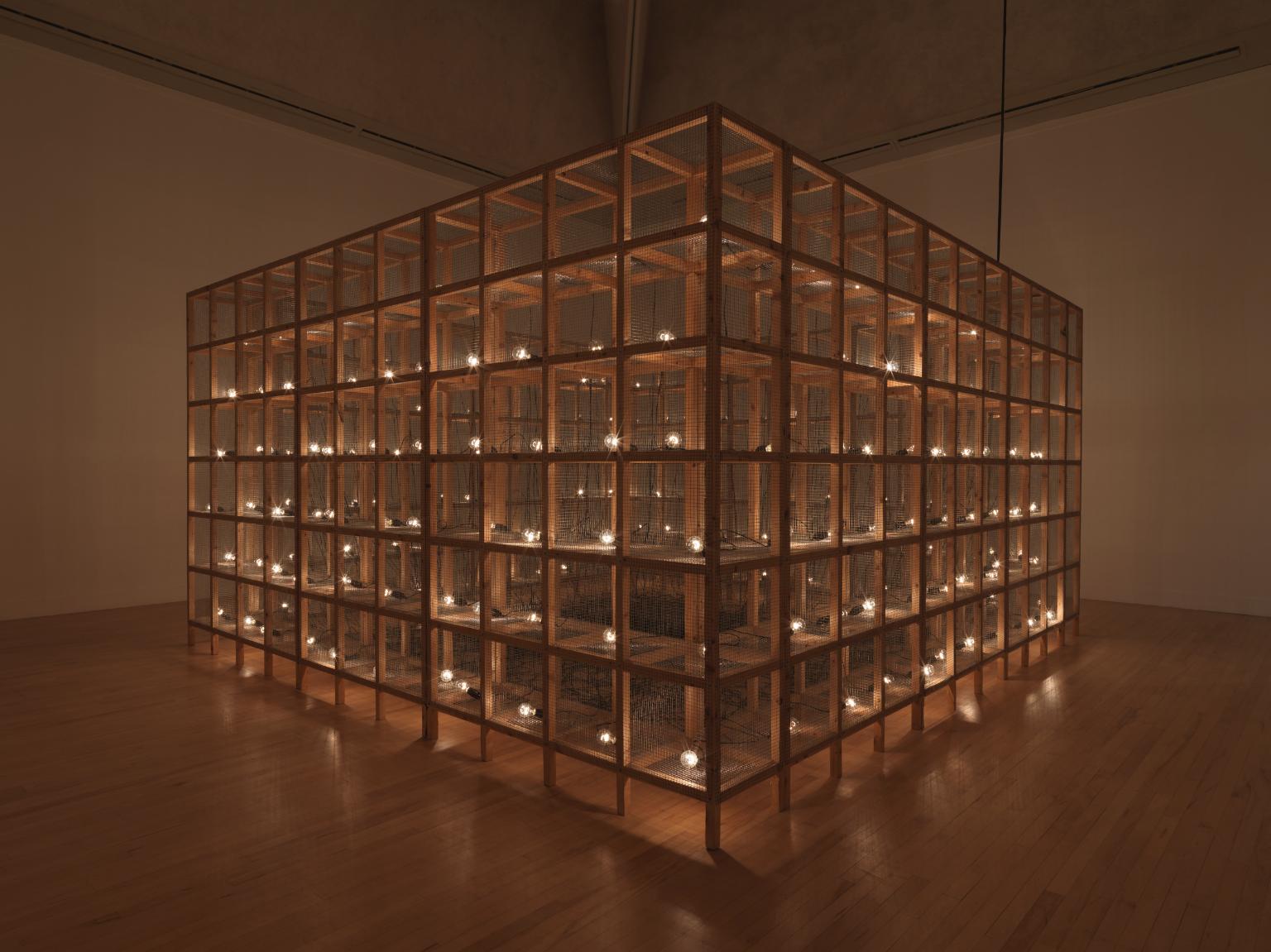
Mona Hatoum, Current Disturbance 1996
Referencing both the human body and rigid systems of abstraction, the installation Current Disturbance 1996 is made from an immense grid of over 200 cages, light bulbs and the amplified sound of electric currents. As the bulbs light up and fade out at irregular intervals, they sporadically illuminate the surrounding gallery. Inside each of the cages rests a single lightbulb, all interconnected via a central convergence. Another single bulb is suspended inside the structure, illuminating the junction box at the centre. The grid of metal cages sets up a contrast between the sense of systematization and the chaos of randomised flashing lights and the mess of wiring covering the floor. The tension arising from this juxtaposition of elements serves to intensify the feeling of suspended energy and instability, inspiring a certain discomfort in the viewer.
10/30
artworks in Sixty Years: The Unfinished Conversation
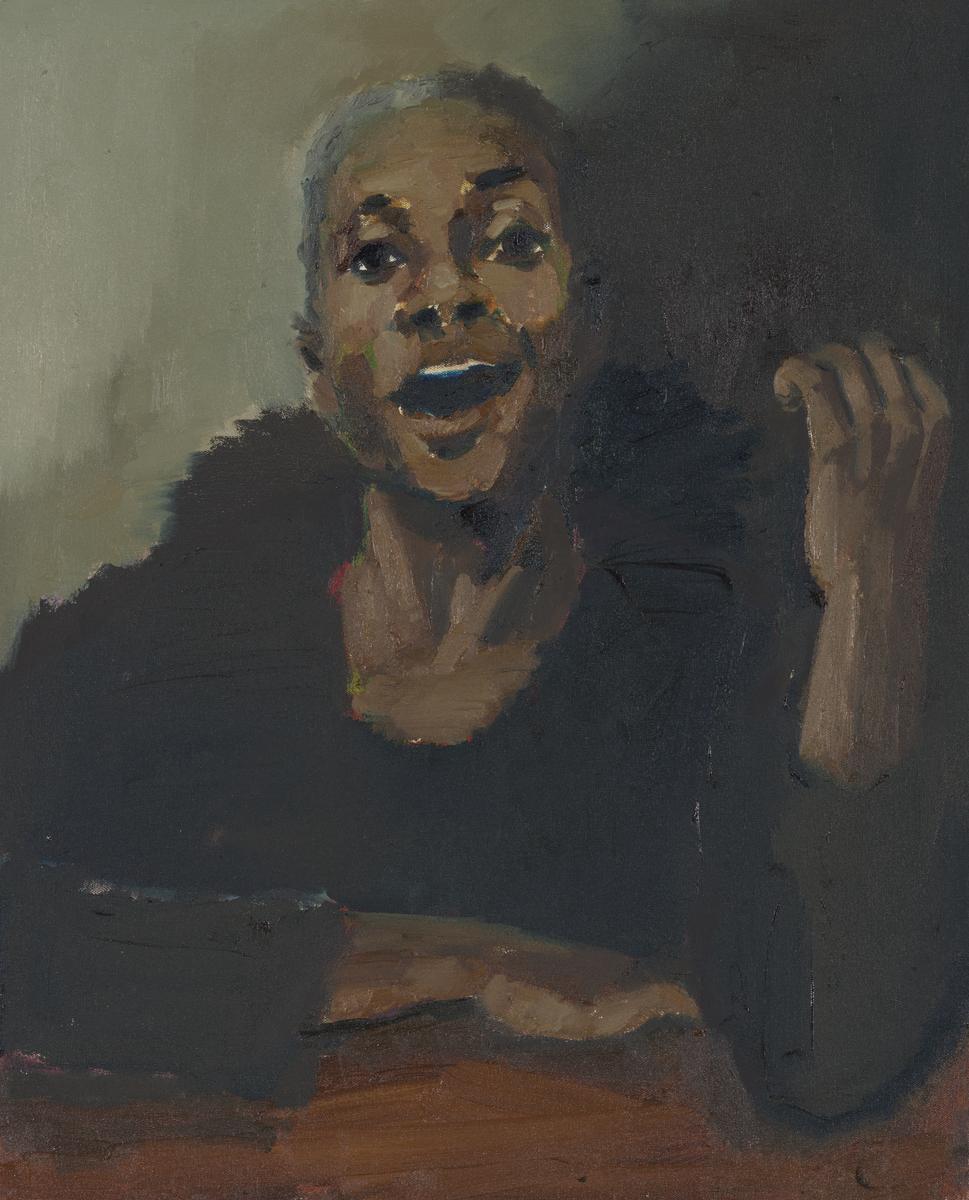
Lynette Yiadom-Boakye, Razorbill 2020
Razorbill 2020 is a small-scale oil painting of a single female figure with closely cropped hair. Her mouth is open as though caught mid-speech or song. Her upper body is clothed in near black, with a feathered ruffle at the collar. Her right forearm and left elbow rest on a tabletop. The motif of the carnivalesque ruff is one that reappears in Yiadom-Boakye’s work from 2009 onwards, in a number of paintings titled with bird names such as Les Corbeaux 2018, Greenfinch 2012 and Skylark 2010. Razorbill is closely related to these in its tones but is markedly different in its shift towards the looser brushwork and warmer palette that characterises Yiadom-Boakye’s work of 2020.
11/30
artworks in Sixty Years: The Unfinished Conversation
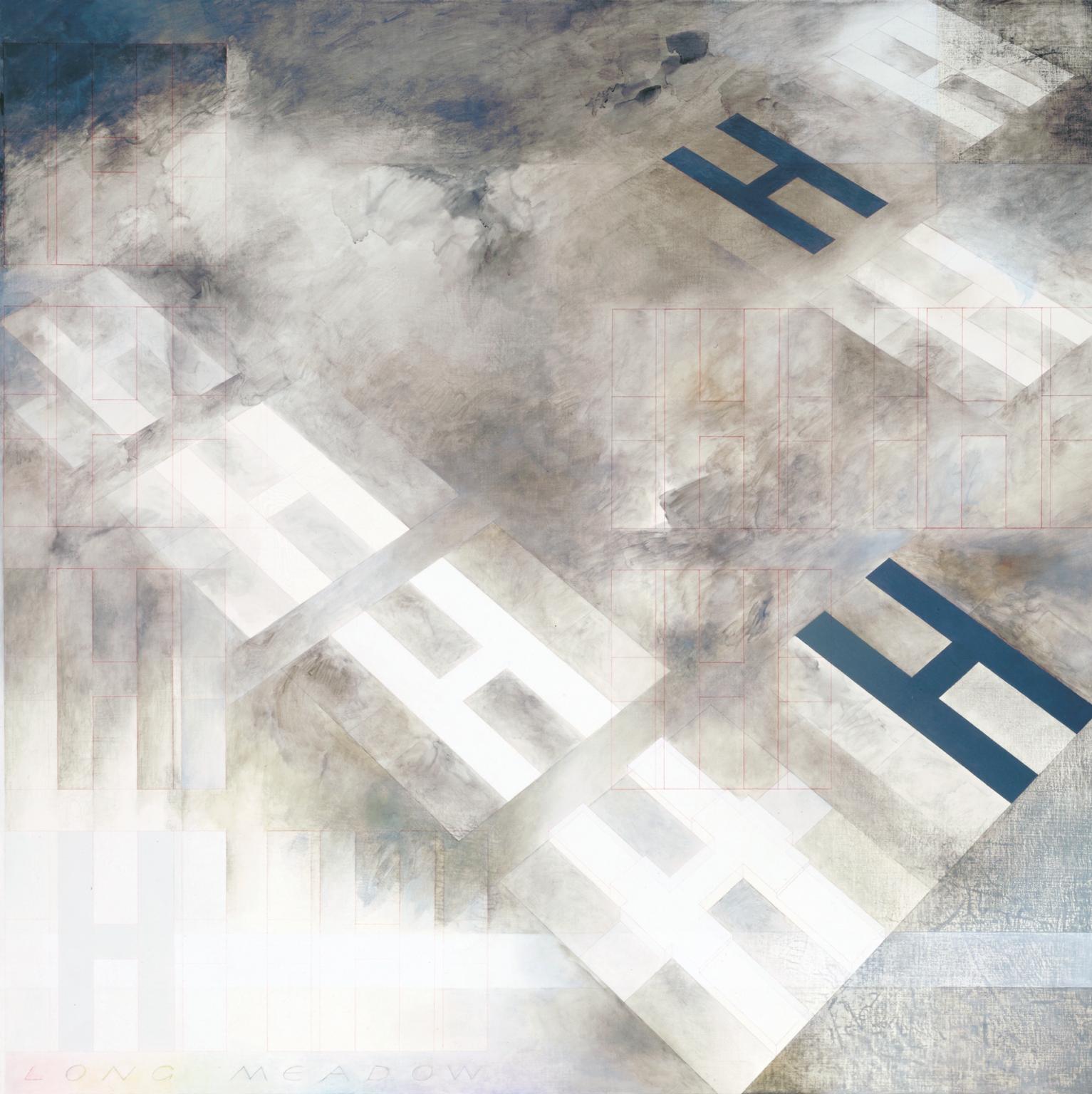
Rita Donagh, Long Meadow 1982
The conflict in the north of Ireland in the 1970s and 1980s saw violent acts by both Unionists and Republicans perpetrated in mainland Britain and Northern Ireland. One of the key sites during those times was the Maze Prison in County Antrim, formerly known as Long Kesh or ‘Long Meadow’, the title of Donagh’s painting. Paramilitary prisoners were housed in the eight prison ‘H Blocks’, projected by Donagh in perspective onto a square canvas, echoing the square plan of a single cell block. The aerial view and the subtle rendering of the light convey the feeling of an air raid.
Gallery label, September 2016
12/30
artworks in Sixty Years: The Unfinished Conversation
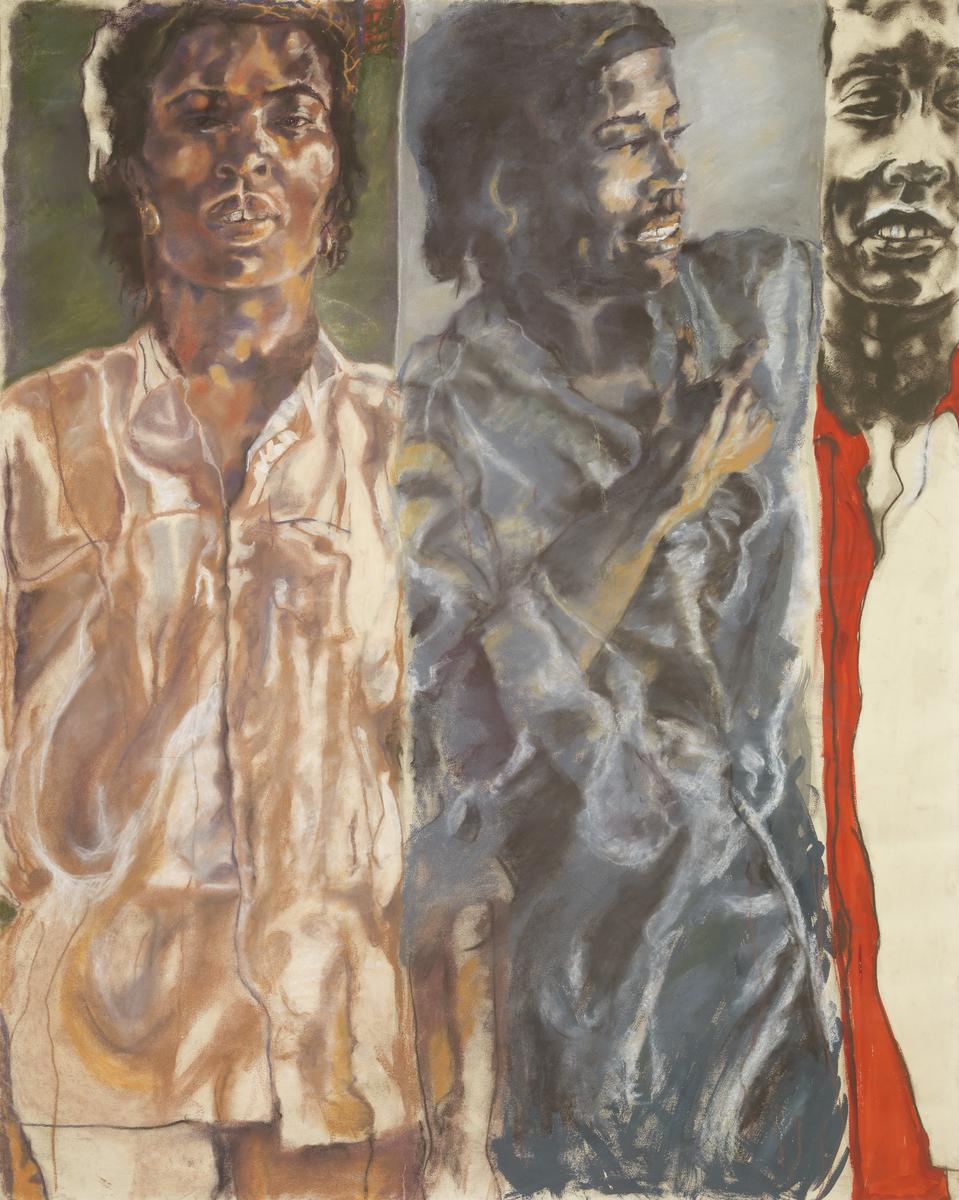
Claudette Johnson MBE, Untitled 1987
Untitled depicts three different views of Brenda Agard (1961-2012), Claudette Johnson’s close friend and fellow artist. Johnson worked on this pastel drawing for three months, building layers of pigment and blending them with her fingers. Instead of drawing from life, Johnson used a row of photographic test strips as a visual reference. Johnson describes her work as existing outside the realm of portraiture: ‘I’m not interested in portraiture or its tradition. I’m interested in giving space to Blackwomen presence.’
Gallery label, January 2025
13/30
artworks in Sixty Years: The Unfinished Conversation
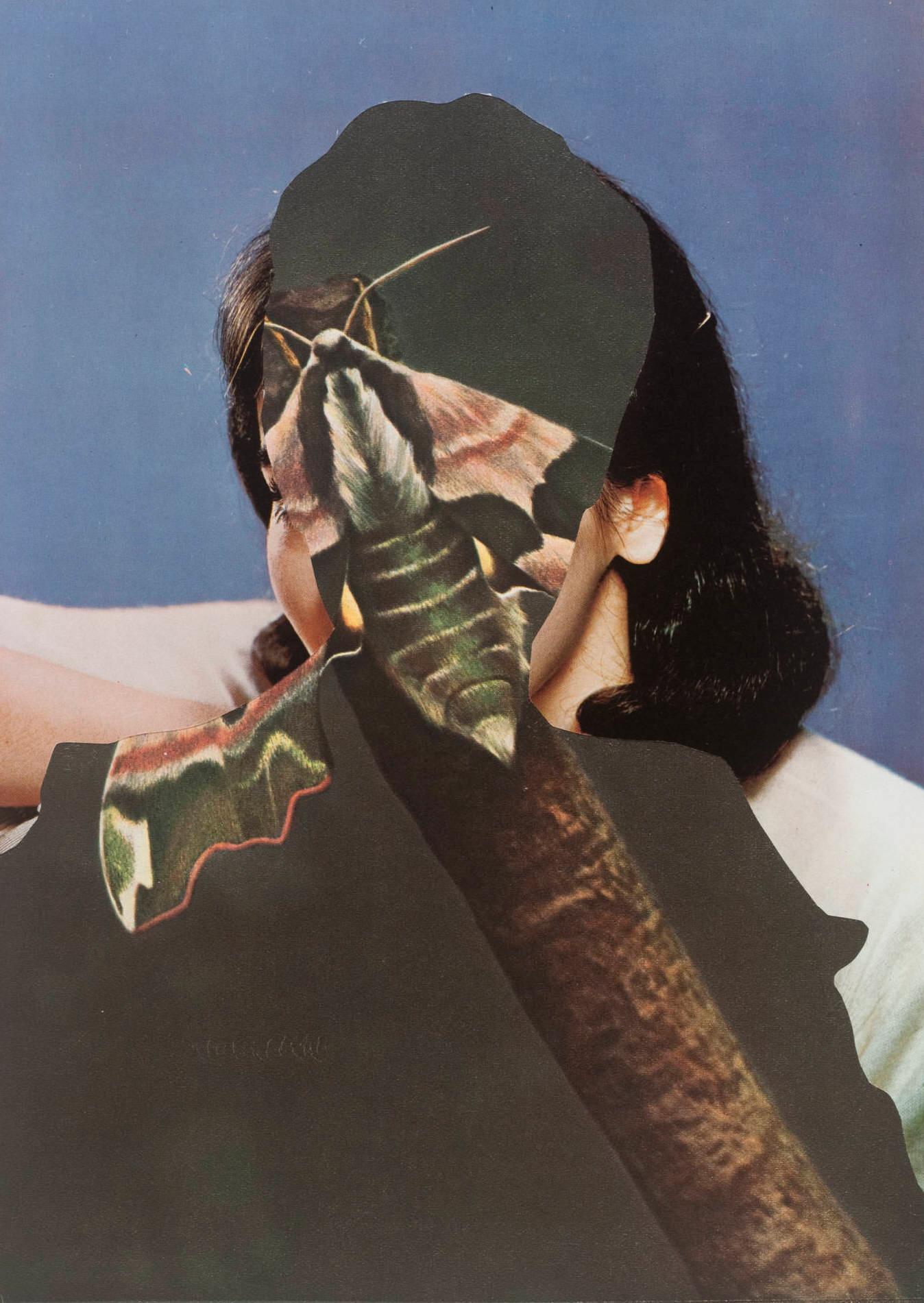
John Stezaker, Untitled 1989
Untitled is a collage combining three separate images. The principal image is a colour photograph of a film actress taken in the 1940s or 1950s. Her face has been excised by the silhouetted figure of another woman cut out of the paper on which the portrait was printed. The space of the silhouette is filled with a photographic reproduction of a moth on a branch. As is usual in a portrait, the photographed actress looks at the viewer but as a result of the artist’s intervention only her cheek, a few eyelashes and a sliver of eyebrow are visible on her right side and her jaw and ear on her left. Her right shoulder and part of her forearm are raised – she appears to be leaning on something. Stezaker’s collage obscures all the parts of her normally needed to read a portrait and in this sense the silhouetted figure operates like a mask – a concept central to Stezaker’s work (see Masks XI, XIII and XIV, 2005-6, T12345-7). The artist derived the image of the moth from an early colour photogravure, printed in a volume of The Natural World (a pre-war publication Stezaker found in a second hand book shop). The colours of its unusual markings – a delicate pink, white and two shades of brown – echo what we can see of the film actress’s skin tones, dark brown hair and white blouse or dress. The moth’s patterning covers most of the actress’s face with the uncanny effect of evoking a strange disfigurement. The artist has commented that the image reminds him ‘of that combination of the insectile and Victorian interiors in A.S.Byatt’s Morpho Eugenia (a short story printed in Angels and Insects, London 1992)’ (letter to the author 27 October 2007).
14/30
artworks in Sixty Years: The Unfinished Conversation
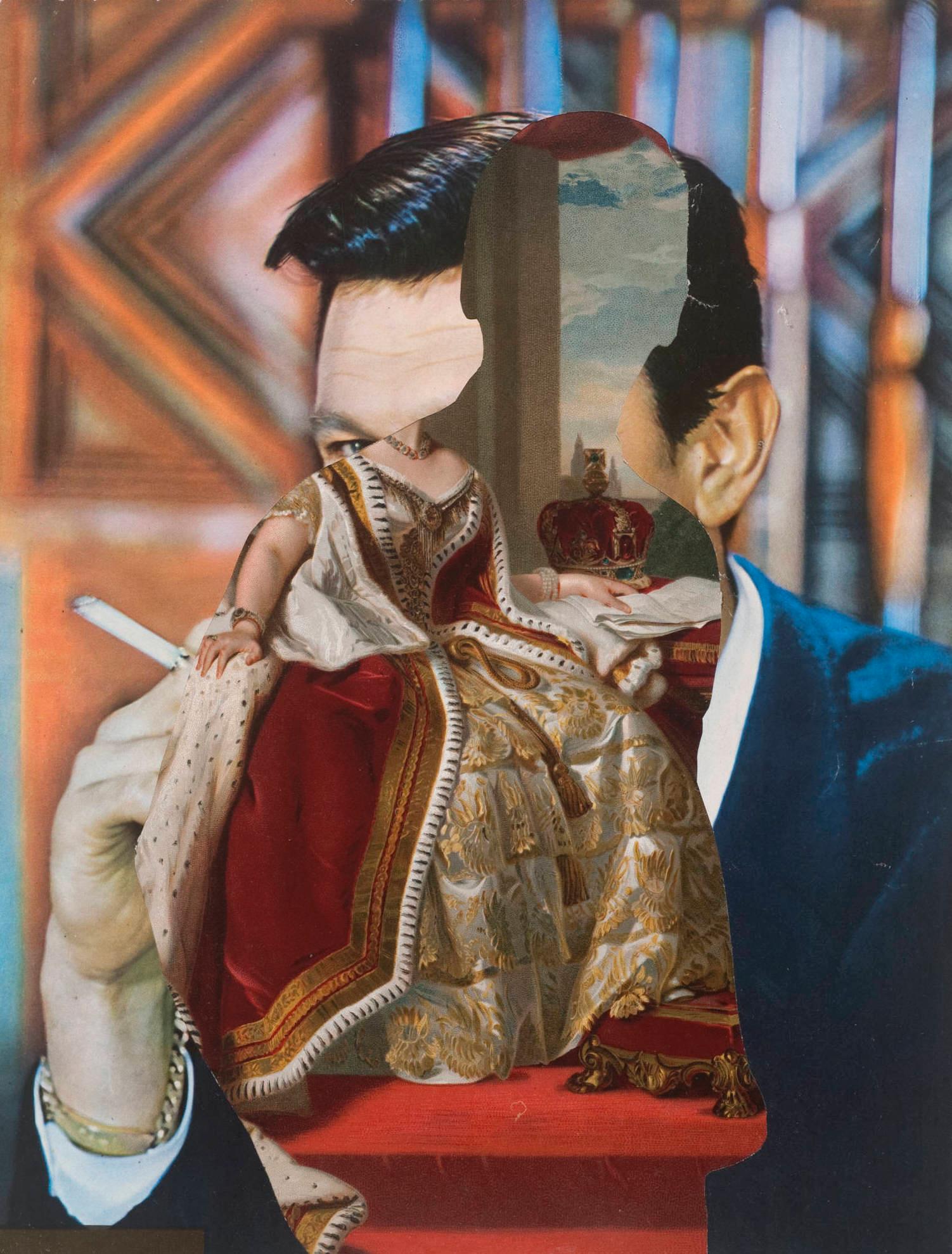
John Stezaker, Third Person &²Ô²ú²õ±è;1988–9
Third Person is a collage combining three separate images. The principal image is a colour photograph of a film actor from the 1940s or 1950s. The silhouetted figure of another man has been cut out of this portrait, eliminating most of the actor’s face and chest, and the space has been filled with a reproduction of a painting of Queen Victoria. The outline of the second man cuts across the actor’s forehead and the corner of his right eye which looks out of the image at the viewer. His right hand, raised close to his face, is bisected by the collaged addition; it holds a cigarette that emerges from the point where the actor’s fingers meet the hand of Queen Victoria, lying on her ermine robes. The outline of the silhouetted male figure cuts off her head at the neck; the line of her necklace extends the line of the smoking actor’s right eyebrow. The silhouetted figure’s head is half filled with the image of a rich blue sky in which clouds are warmly illuminated in orange shades that complement the queen’s skin tones and the flesh tones of the smoking actor. The blue sky echoes highlights of blue light in the smoking actor’s black hair and on his dark jacket. These complimentary colours – shades of orange and electric blue – are repeated in the out of focus orange and blue patterning on the wall behind the actor.
15/30
artworks in Sixty Years: The Unfinished Conversation
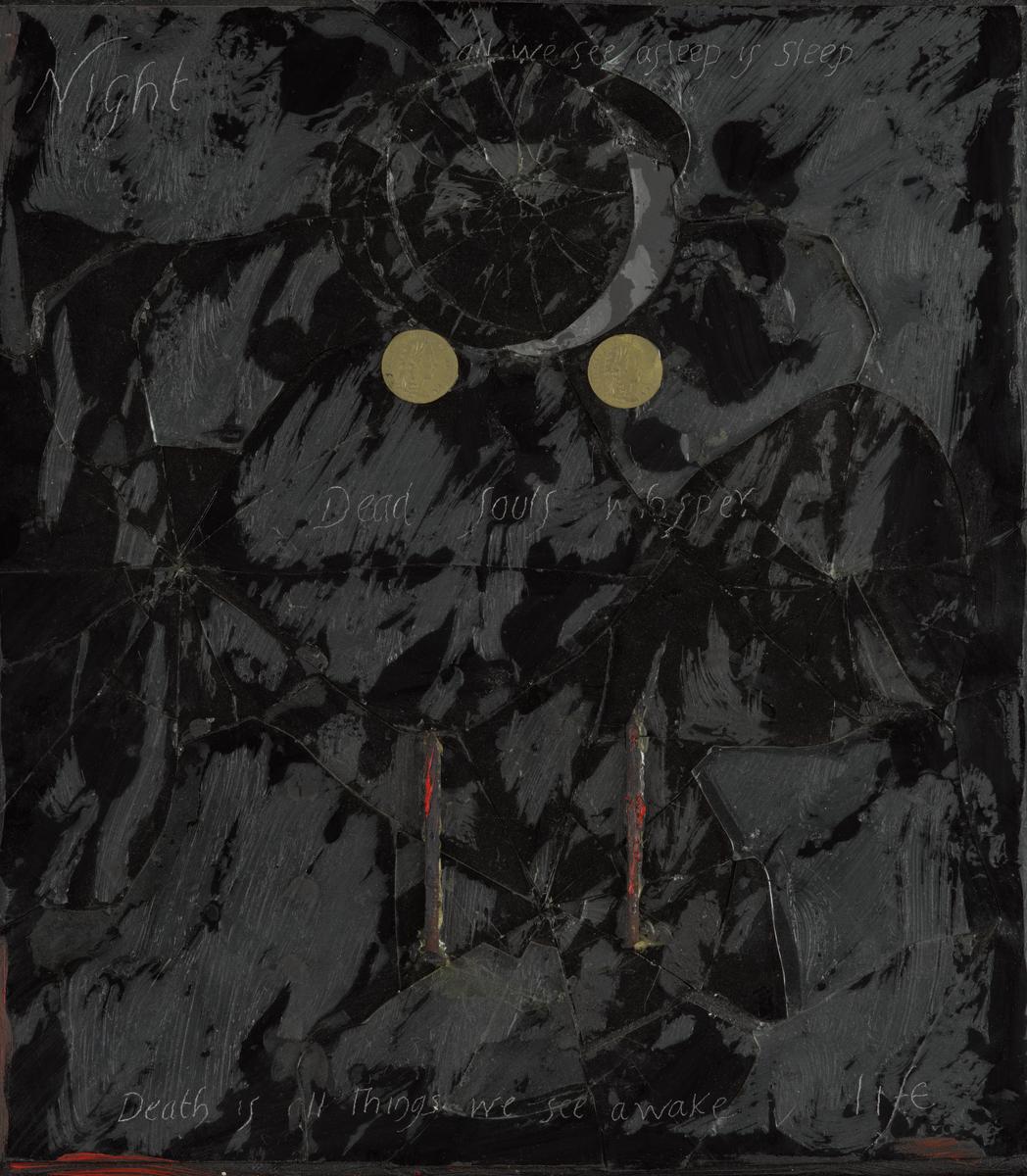
Derek Jarman, Dead Man’s Eyes 1987
16/30
artworks in Sixty Years: The Unfinished Conversation
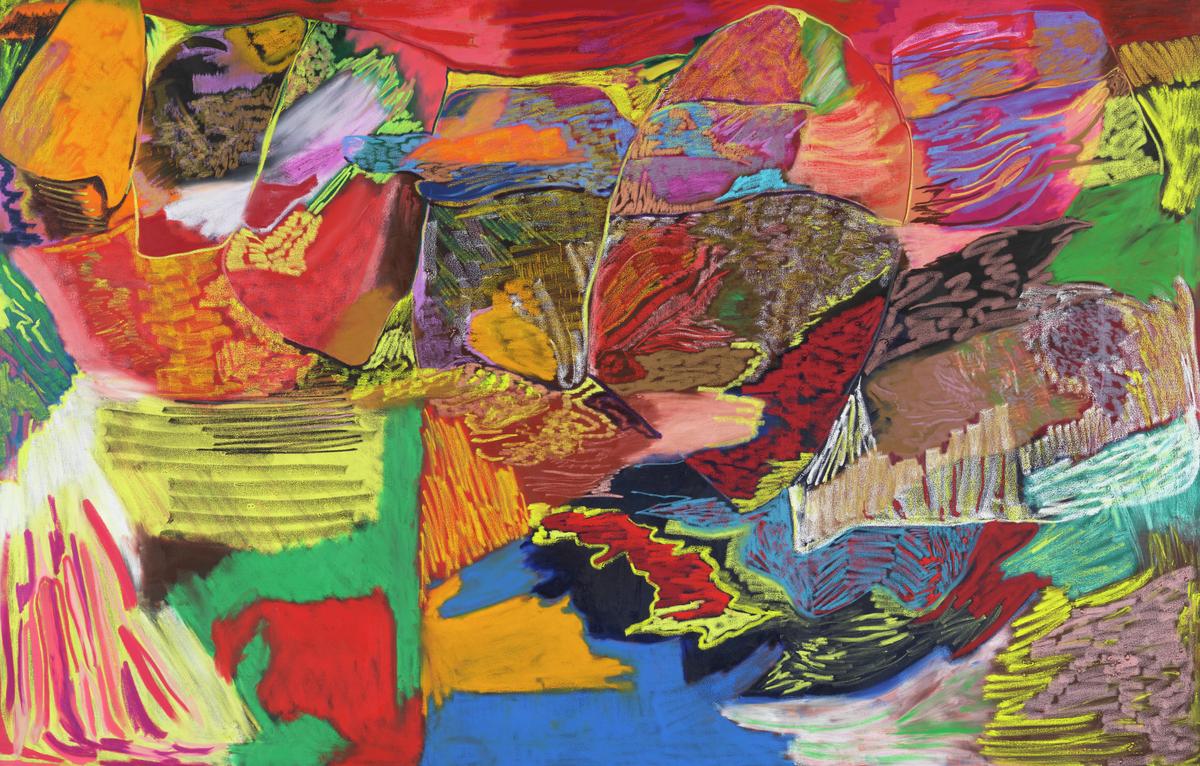
Rachel Jones, lick your teeth, they so clutch 2021
lick your teeth, they so clutch 2020 is a large-scale landscape-format painting in oil stick on canvas. Like Jones’s earlier paintings, it employs a kaleidoscopic palette and boldness of form typical of her work. Here, fiery reds collide with fleshy pinks and acid yellows against the counterbalancing coolness of blues and greens, contributing to the sense of tension created by the competing forms and the interplay of textures. Jones’s characteristic use of oil sticks as her medium allows her to create an intensity of pigment, layering colour and melding different textural layers that result in a tactile painted surface suggestive of a physical, embodied and intuitive approach to mark-making.
17/30
artworks in Sixty Years: The Unfinished Conversation
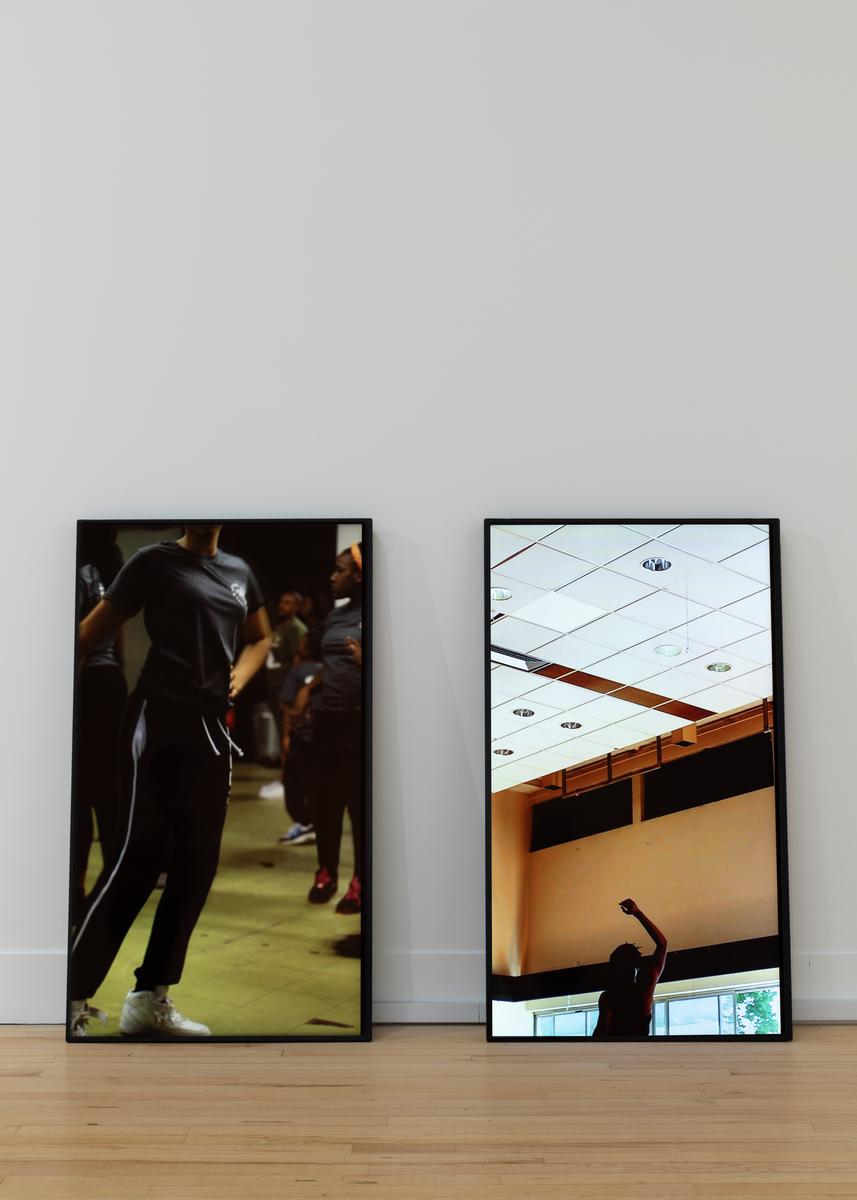
Paul Maheke, Mutual Survival, Lorde’s Manifesto 2015
Mutual Survival, Lorde’s Manifesto 2015 is a two-channel colour video installation presented on two floor-based forty-two-inch LED smart screens displayed leaning against a wall. The work’s title references the American Black feminist writer and activist Audre Lorde (1934–1992) whose words, borrowed and edited together from her essay ‘I am Your Sister’ published in 1985, caption the video intermittently. ‘As a people, we should most certainly work together to end our common oppression,’ the video subtitle begins. ‘We need to join our differences and articulate our particular strengths in the service of our mutual survivals.’ The work lasts seventeen minutes and fifteen seconds and exists in an edition of five. °Õ²¹³Ù±ð’s copy is number one in the edition.
18/30
artworks in Sixty Years: The Unfinished Conversation
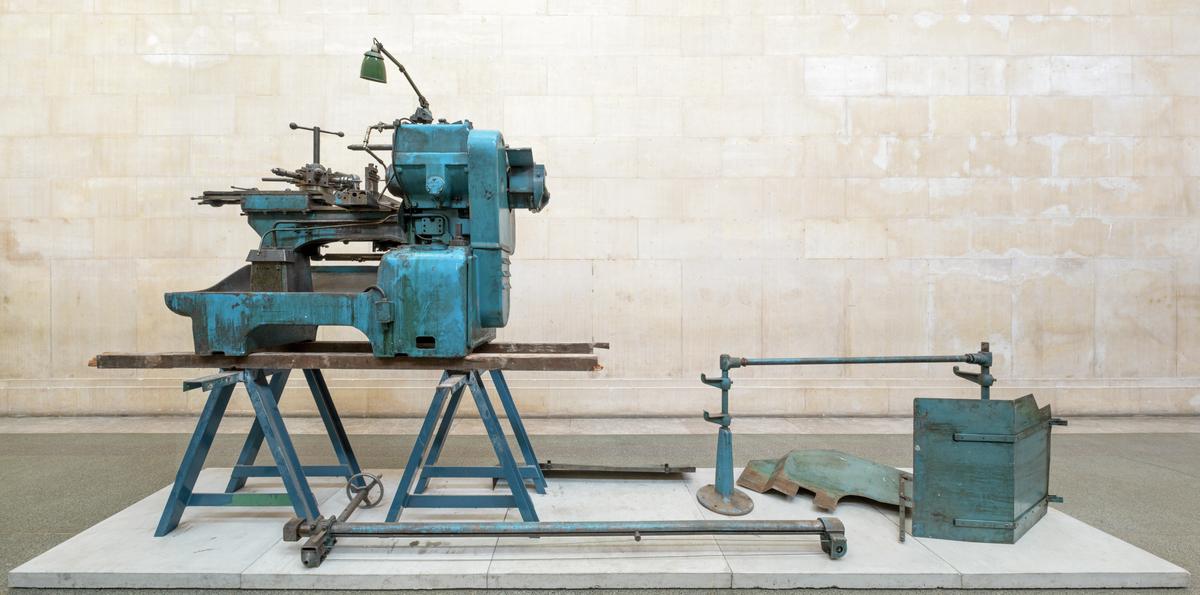
Mike Nelson, The Asset Strippers (Elephant) 2019
The Asset Strippers (Elephant) 2019 is a large sculptural assemblage made from reclaimed industrial items and materials. It was made as part of Mike Nelson’s larger project The Asset Stripers, his response to the Tate Britain Commission for the Duveen Galleries in 2019. A brilliant blue lathe balances on two wooden timbers on top of a pair of blue trestles. At the top of the lathe sits a dark green anglepoise lamp without a bulb. Positioned alongside at floor level are assorted lathe parts. Three of the parts lie horizontally, two stand upright. Each has been carefully placed in the manner of an archeological artefact or sculptural object, rather than an industrial machine part. The lathe and its component parts are placed on five abutting cast concrete slabs that together resemble a low-level traditional sculptural plinth. The compositional treatment of the parts, together with the monochromatic colour scheme, is reminiscent of British modernist sculpture, in particular the industrial assemblages of Anthony Caro (1924–2013). However, unlike much of Caro’s work, The Asset Strippers (Elephant) has not been painted or surface-treated. The patina of age and use of its reclaimed parts are visible in areas of rusting and traces of oil. Two other assemblages from The Asset Strippers are also in °Õ²¹³Ù±ð’s collection: The Asset Strippers (Heygate stack, equivalent for a lost estate) 2019 (Tate T15412) and Double Drill (No. 15) 2019 (Tate T15411).
19/30
artworks in Sixty Years: The Unfinished Conversation
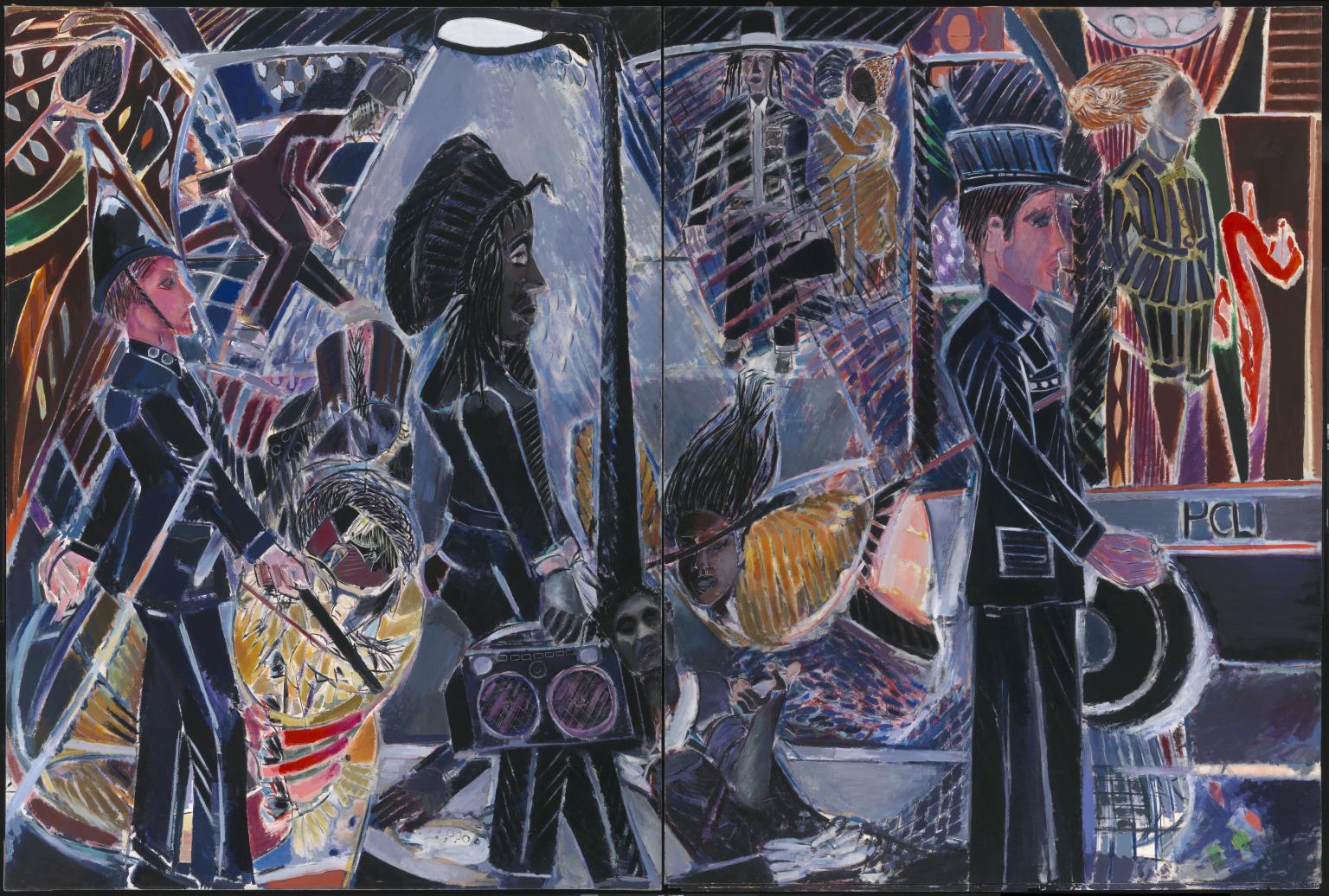
Denzil Forrester MBE, Three Wicked Men 1982
Three Wicked Men narrates the story of Winston Rose, a childhood friend of Denzil Forrester who died under contentious circumstances while in police custody in 1981. The stiff, uniformed figures of the two policemen flank Rose, seeming to drain the colour from their surroundings. Occasional flashes of bright activity interrupt from the street. Forrester belongs to a generation of Black British artists who use figurative painting to depict racial and social injustice. Working from the outset of the Thatcher government in the early 1980s, his dynamic and crowded scenes are inspired by his time spent working in London reggae and dub clubs.
Gallery label, January 2025
20/30
artworks in Sixty Years: The Unfinished Conversation
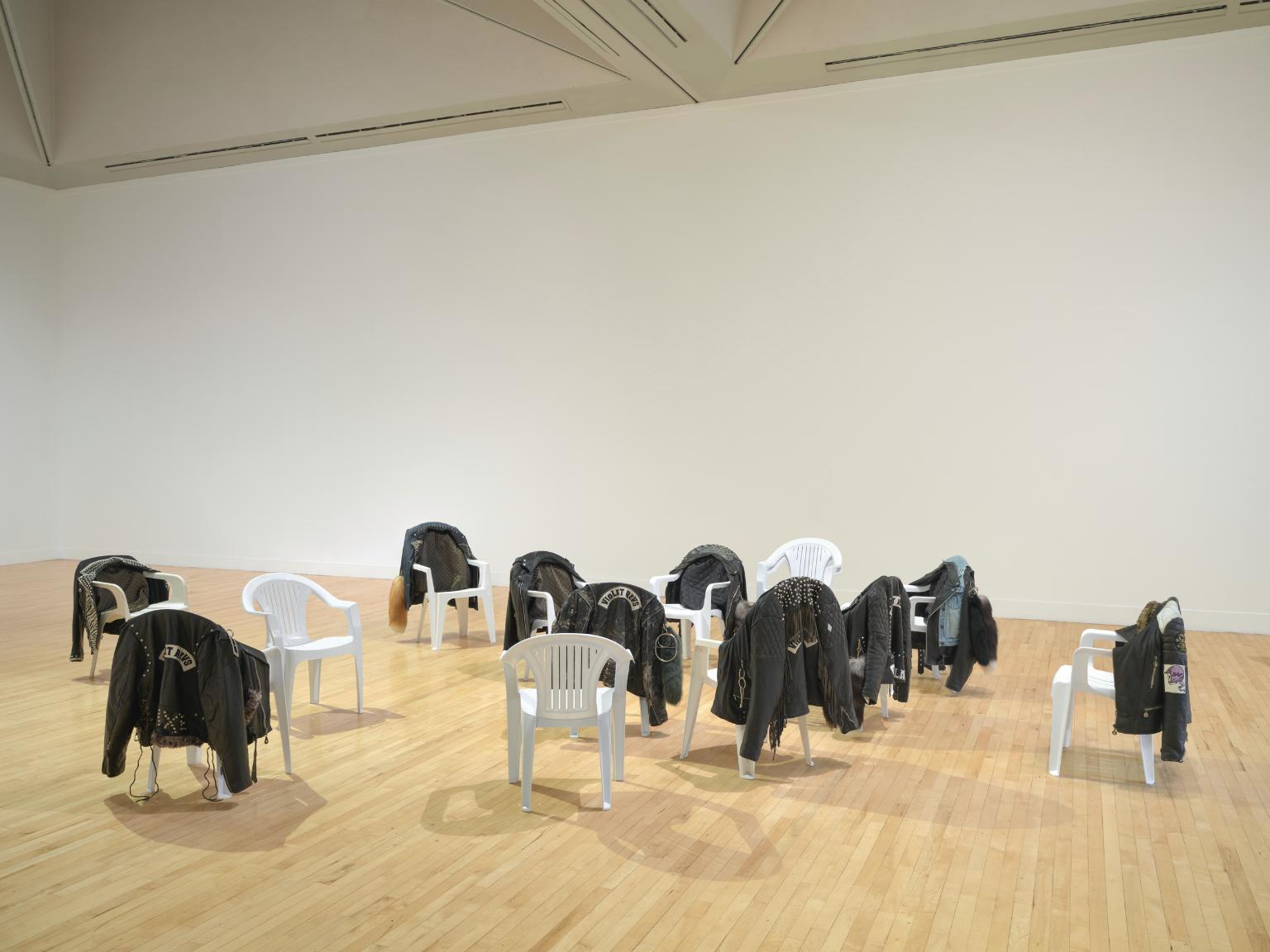
Nicole Wermers, The Violet Revs 2016
Ten vintage jackets suggest the presence of a woman biker gang operating under the name ‘Violet Revs’. They are draped over chairs to look as if the women have briefly left the room. The installation draws on the myth, started in the US in the 1950s, of men on motorbikes wreaking havoc on small towns. It tapped into the fear of the ‘other’ prevalent in post-war US society. Like in much of Nicole Wermers’s work, she disrupts our expectations of gender norms. Here, she reimagines these bikers as women, referencing the biker gangs of the sixties and seventies she discovered in her research.
Gallery label, January 2025
21/30
artworks in Sixty Years: The Unfinished Conversation
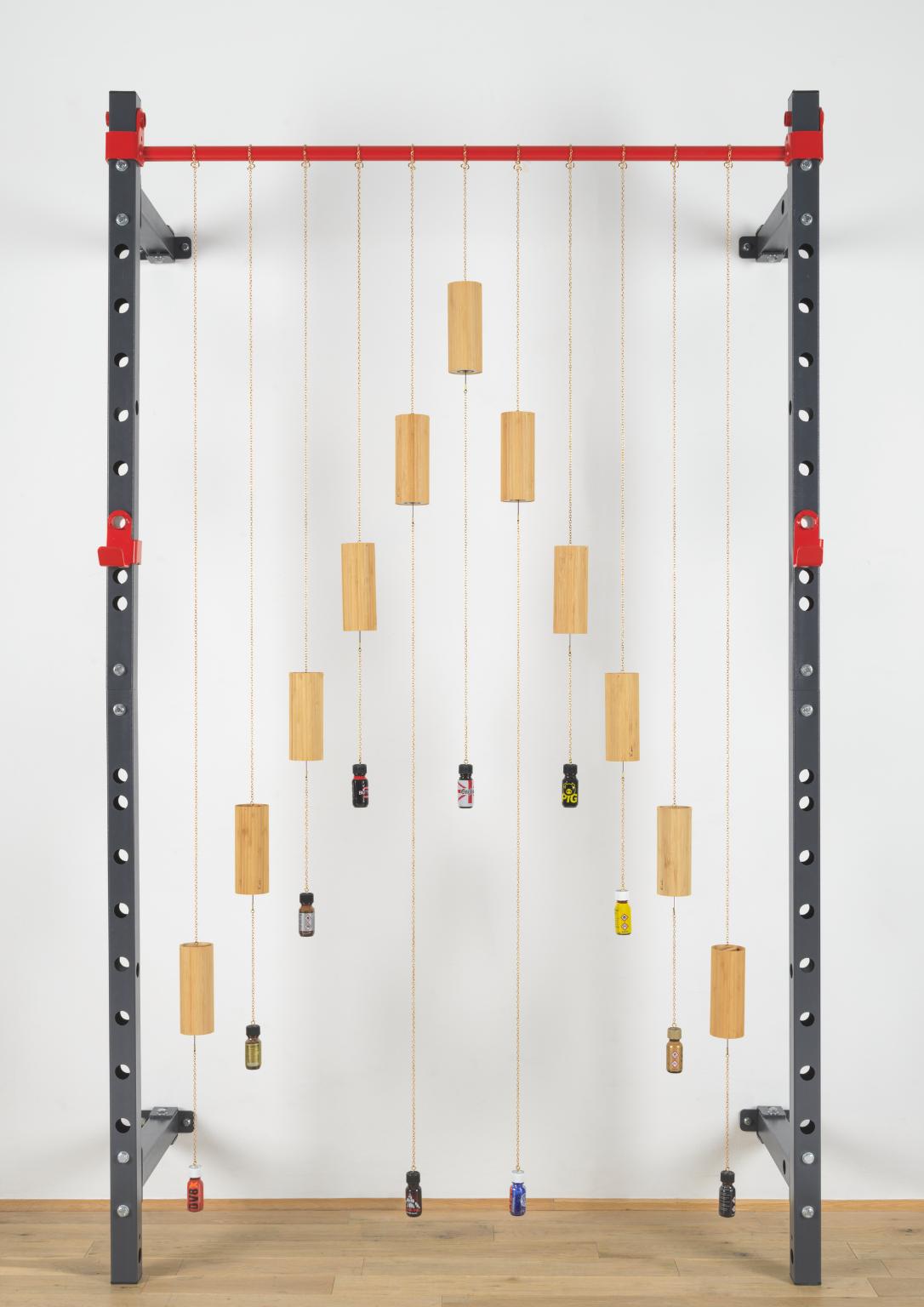
Adam Farah-Saad, Two traumatised young men connect whilst roaming the city of London, helping each other to survive…(THE INNER CHILDREN MIX) 2023
Adam Farah-Saad explores how love, loss and grief are held within personal and cultural objects. Here, empty bottles of poppers are suspended from a gym bar repurposed from his studio and weaved into chains. They act as Koshi wind chimes, an instrument often used in sound therapy and meditation. The work is a shrine to survival, reflecting on the artist’s relationship to addiction and healing. It draws on the artist’s memory of the unexpected relationship alluded to in the title. Farah-Saad describes his art as a ‘call out for human connection, through vulnerability, reminiscing/reflecting, spiritual criticality’.
This work is activated at intervals by a member of Tate staff.
Gallery label, January 2025
22/30
artworks in Sixty Years: The Unfinished Conversation
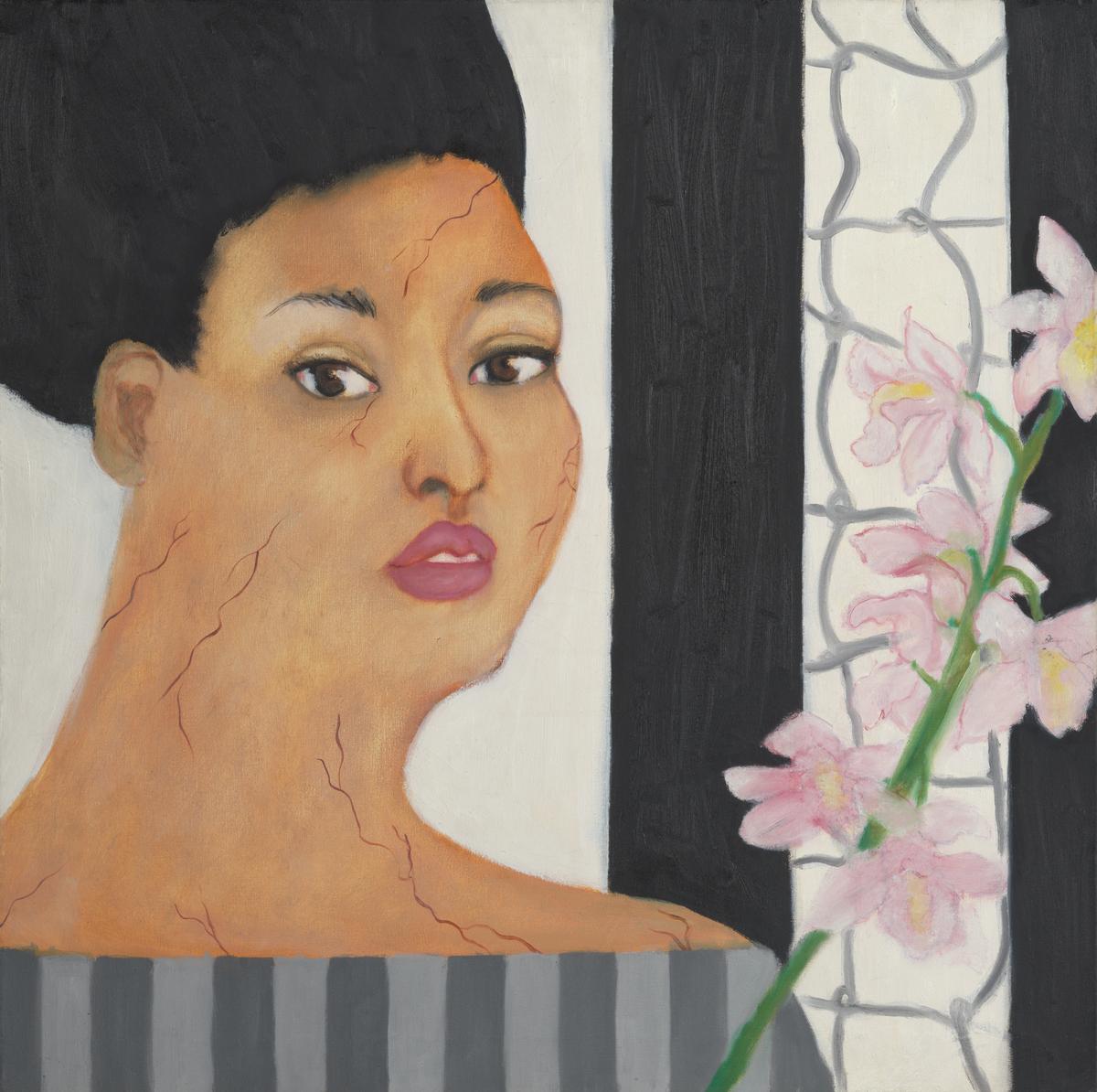
Rita Keegan, Homage to Frida Kahlo 1987
In this self-portrait, Rita Keegan stares out at the viewer. Her direct gaze recalls the self-portraits of Mexican painter Frida Kahlo (1907–1954). Cracks appear throughout her face, neck and chest. Portraiture and self-portraiture feature regularly in Keegan’s practice and are often references to her family photographs. Her extensive archive documents her Black middle-class Canadian family from the 1890s to the present day. Keegan moved to London in 1980 from the US and, in 1982, co-founded Brixton Art Gallery. She has spent her career working to support artists of colour.
Gallery label, January 2025
23/30
artworks in Sixty Years: The Unfinished Conversation
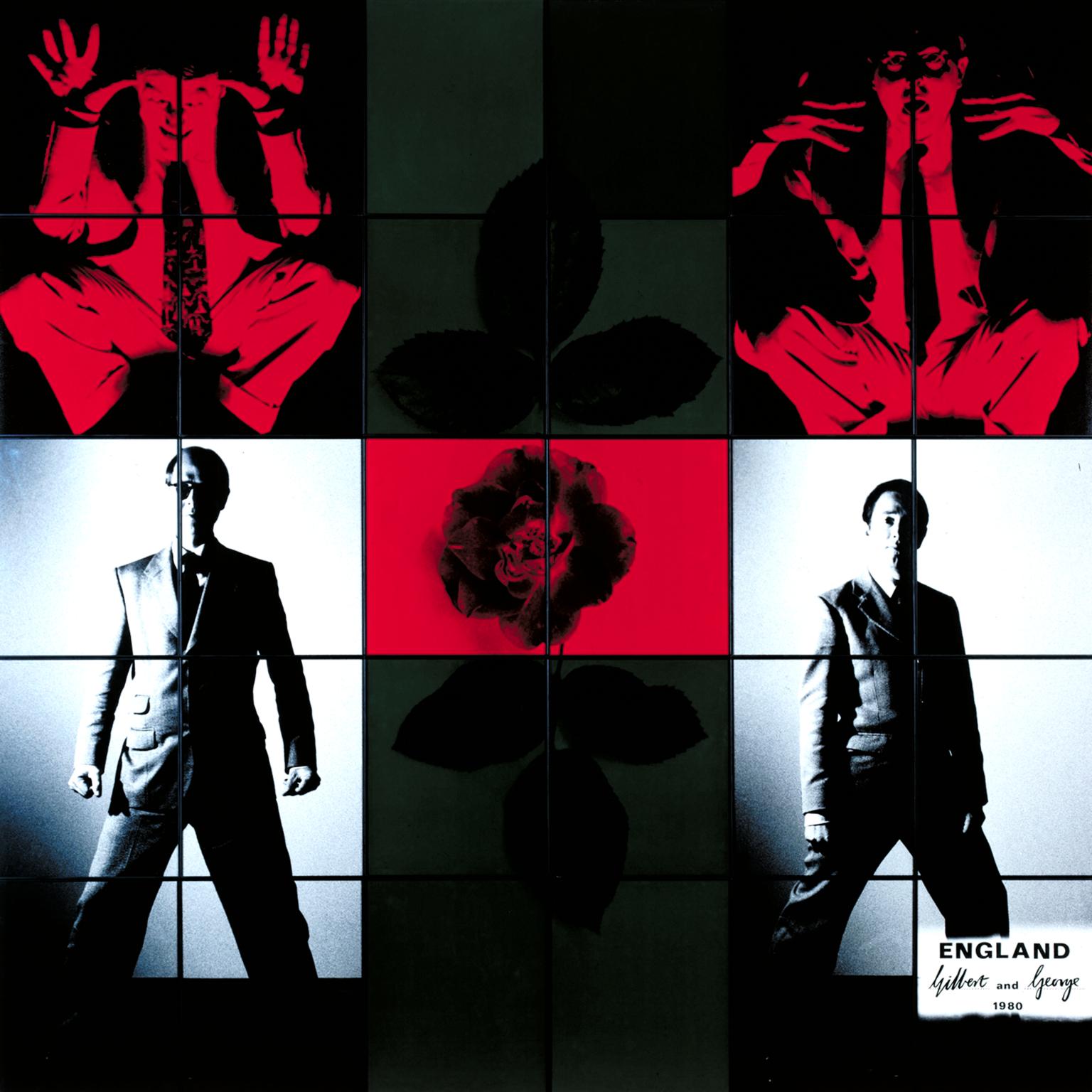
Gilbert & George, England 1980
A fading Tudor rose representing England occupies the centre of this work. On either side, Gilbert & George strike confident poses in ‘a physical salute’ to the country. The artists’ sinister, gargoyle-like alter-egos perch above, suggesting a threat to the figures below. From 1974, the colour red began to appear regularly in their works. It hints at connotations of violence, rage and sex. As they put it, ‘Red is like love, or it is like blood, or danger, or fire.’ England is part of Modern Fears, a series produced between 1980 and 1981.
Gallery label, January 2025
24/30
artworks in Sixty Years: The Unfinished Conversation
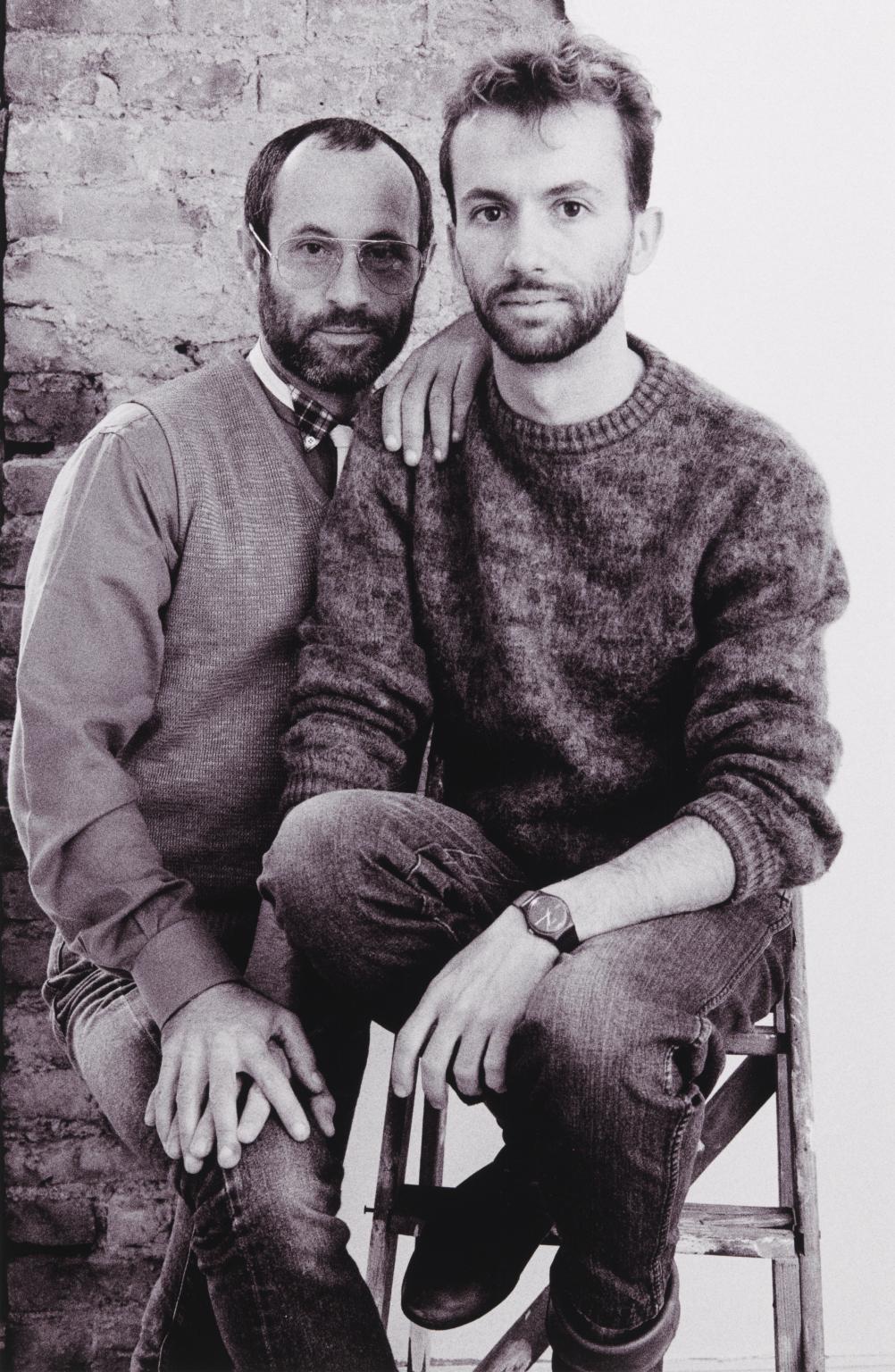
Sunil Gupta, Bruno & Daniel, London 1984, printed 2018
This series of black and white portraits features gay and lesbian couples from Sunil Gupta’s social circles in London and Newcastle. Called Lovers: Ten Years On, the project was shot over a period of two years from 1984–6, following the end of Gupta’s own ten-year relationship. Reminiscent of traditional family portraits, the photographs show couples in affectionate poses in their own living spaces. Prejudicial coverage of the HIV and AIDS epidemic in the 1980s threatened to turn public opinion against the acceptance of queer relationships, which were portrayed as ‘sexually deviant’. In contrast to these offensive depictions of queer love, the people in Lovers: Ten Years On are often presented as quite ordinary, middle-class, professional couples. Many of the people photographed would later lose their lives to HIV and AIDS.
Gallery label, January 2025
25/30
artworks in Sixty Years: The Unfinished Conversation
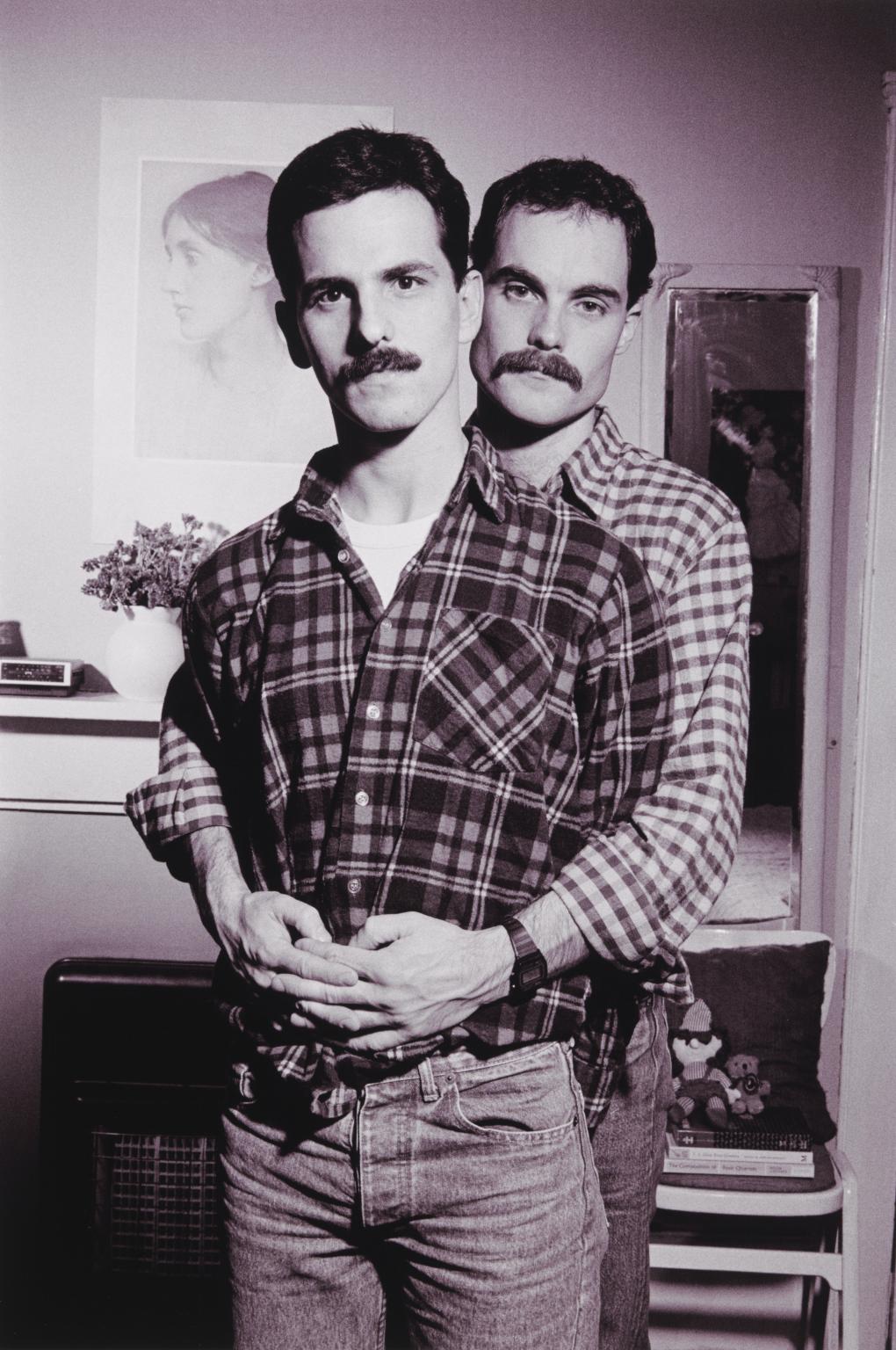
Sunil Gupta, Johnathan & Kim, London 1985, printed 2018
This series of black and white portraits features gay and lesbian couples from Sunil Gupta’s social circles in London and Newcastle. Called Lovers: Ten Years On, the project was shot over a period of two years from 1984–6, following the end of Gupta’s own ten-year relationship. Reminiscent of traditional family portraits, the photographs show couples in affectionate poses in their own living spaces. Prejudicial coverage of the HIV and AIDS epidemic in the 1980s threatened to turn public opinion against the acceptance of queer relationships, which were portrayed as ‘sexually deviant’. In contrast to these offensive depictions of queer love, the people in Lovers: Ten Years On are often presented as quite ordinary, middle-class, professional couples. Many of the people photographed would later lose their lives to HIV and AIDS.
Gallery label, January 2025
26/30
artworks in Sixty Years: The Unfinished Conversation
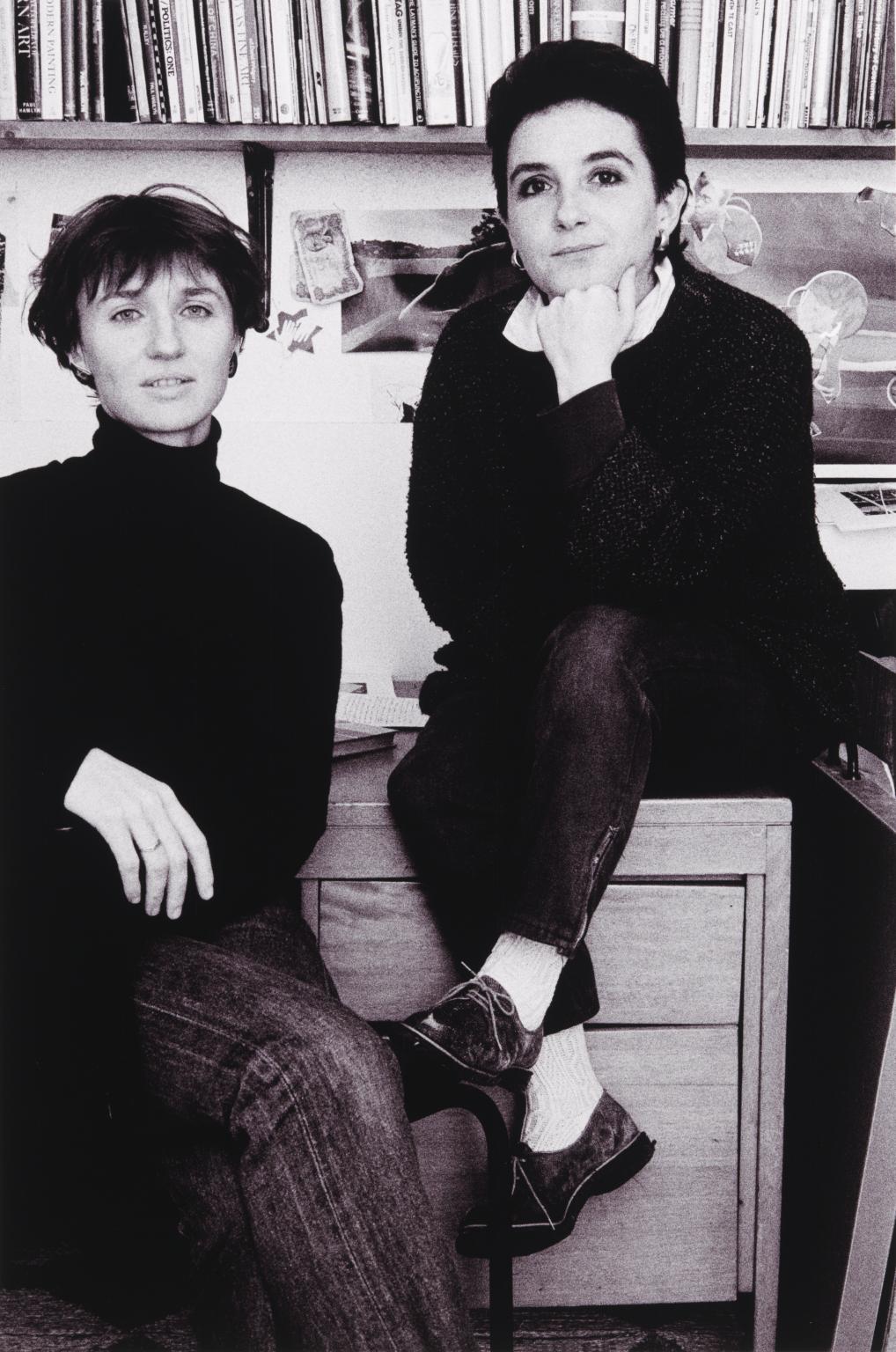
Sunil Gupta, Sue & Yve, London 1984, printed 2018
This series of black and white portraits features gay and lesbian couples from Sunil Gupta’s social circles in London and Newcastle. Called Lovers: Ten Years On, the project was shot over a period of two years from 1984–6, following the end of Gupta’s own ten-year relationship. Reminiscent of traditional family portraits, the photographs show couples in affectionate poses in their own living spaces. Prejudicial coverage of the HIV and AIDS epidemic in the 1980s threatened to turn public opinion against the acceptance of queer relationships, which were portrayed as ‘sexually deviant’. In contrast to these offensive depictions of queer love, the people in Lovers: Ten Years On are often presented as quite ordinary, middle-class, professional couples. Many of the people photographed would later lose their lives to HIV and AIDS.
Gallery label, January 2025
27/30
artworks in Sixty Years: The Unfinished Conversation
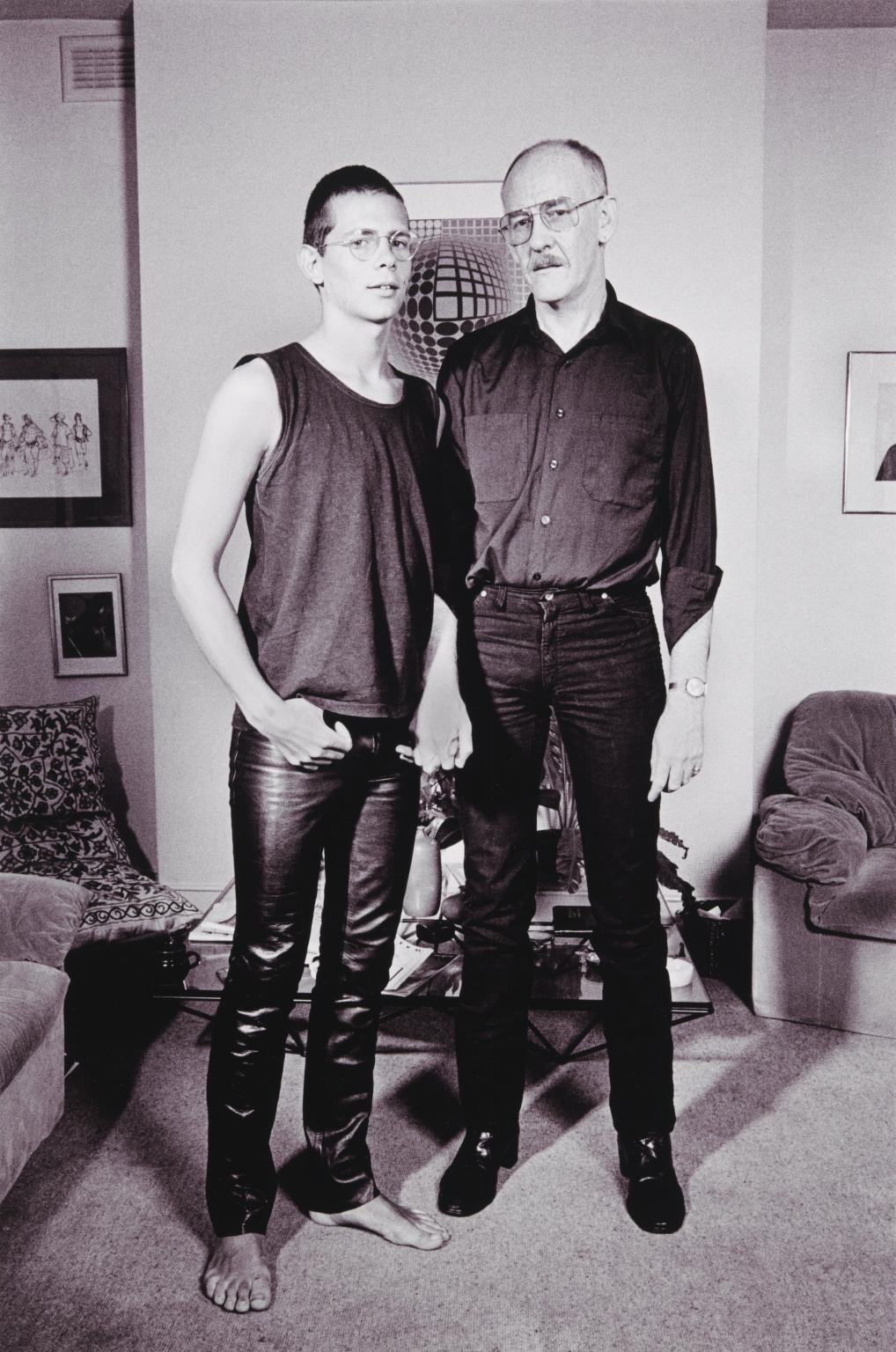
Sunil Gupta, Andrew & John, London 1985, printed 2018
This series of black and white portraits features gay and lesbian couples from Sunil Gupta’s social circles in London and Newcastle. Called Lovers: Ten Years On, the project was shot over a period of two years from 1984–6, following the end of Gupta’s own ten-year relationship. Reminiscent of traditional family portraits, the photographs show couples in affectionate poses in their own living spaces. Prejudicial coverage of the HIV and AIDS epidemic in the 1980s threatened to turn public opinion against the acceptance of queer relationships, which were portrayed as ‘sexually deviant’. In contrast to these offensive depictions of queer love, the people in Lovers: Ten Years On are often presented as quite ordinary, middle-class, professional couples. Many of the people photographed would later lose their lives to HIV and AIDS.
Gallery label, January 2025
28/30
artworks in Sixty Years: The Unfinished Conversation
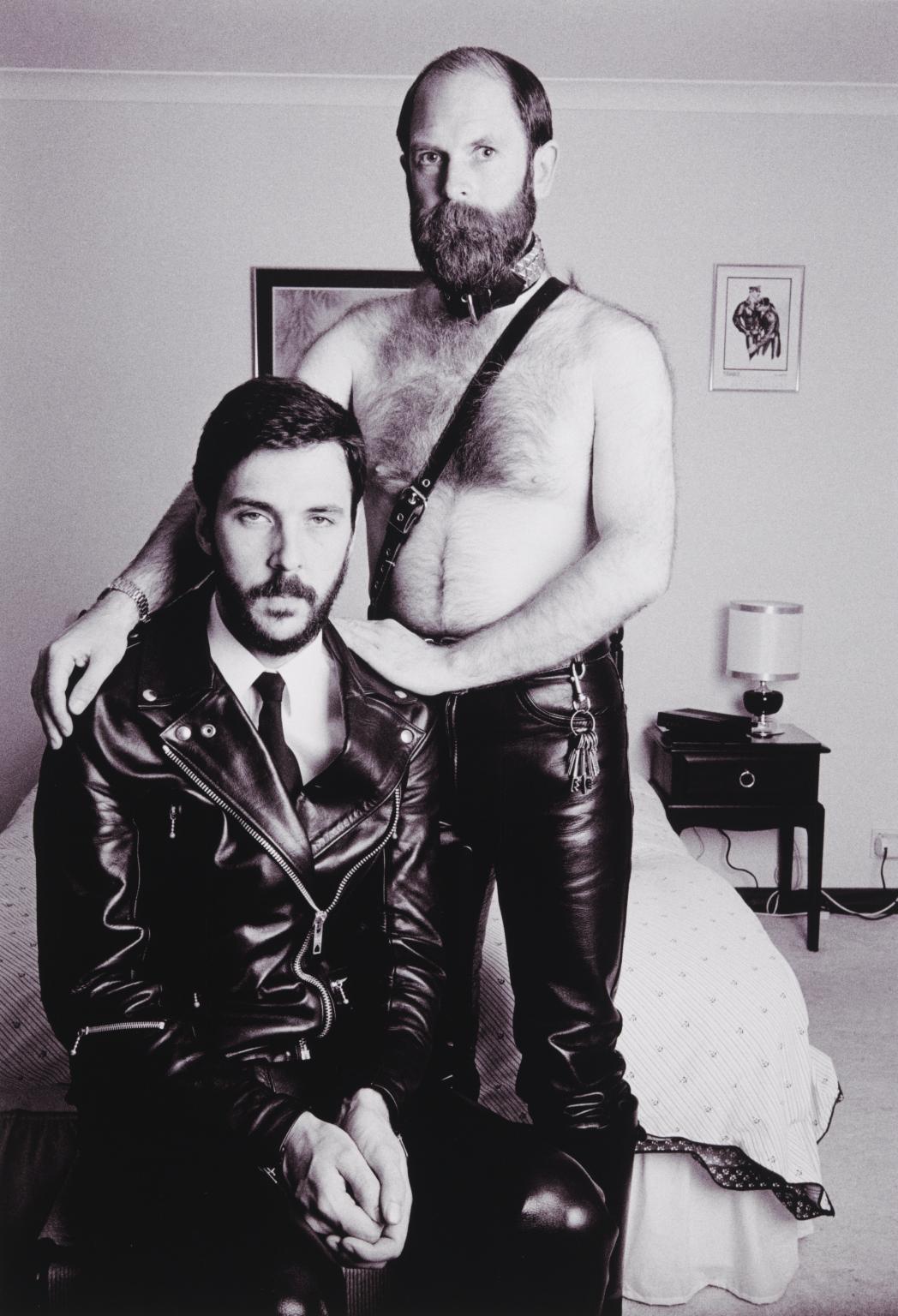
Sunil Gupta, Dylan & Gerald, London 1985, printed 2018
This series of black and white portraits features gay and lesbian couples from Sunil Gupta’s social circles in London and Newcastle. Called Lovers: Ten Years On, the project was shot over a period of two years from 1984–6, following the end of Gupta’s own ten-year relationship. Reminiscent of traditional family portraits, the photographs show couples in affectionate poses in their own living spaces. Prejudicial coverage of the HIV and AIDS epidemic in the 1980s threatened to turn public opinion against the acceptance of queer relationships, which were portrayed as ‘sexually deviant’. In contrast to these offensive depictions of queer love, the people in Lovers: Ten Years On are often presented as quite ordinary, middle-class, professional couples. Many of the people photographed would later lose their lives to HIV and AIDS.
Gallery label, January 2025
29/30
artworks in Sixty Years: The Unfinished Conversation
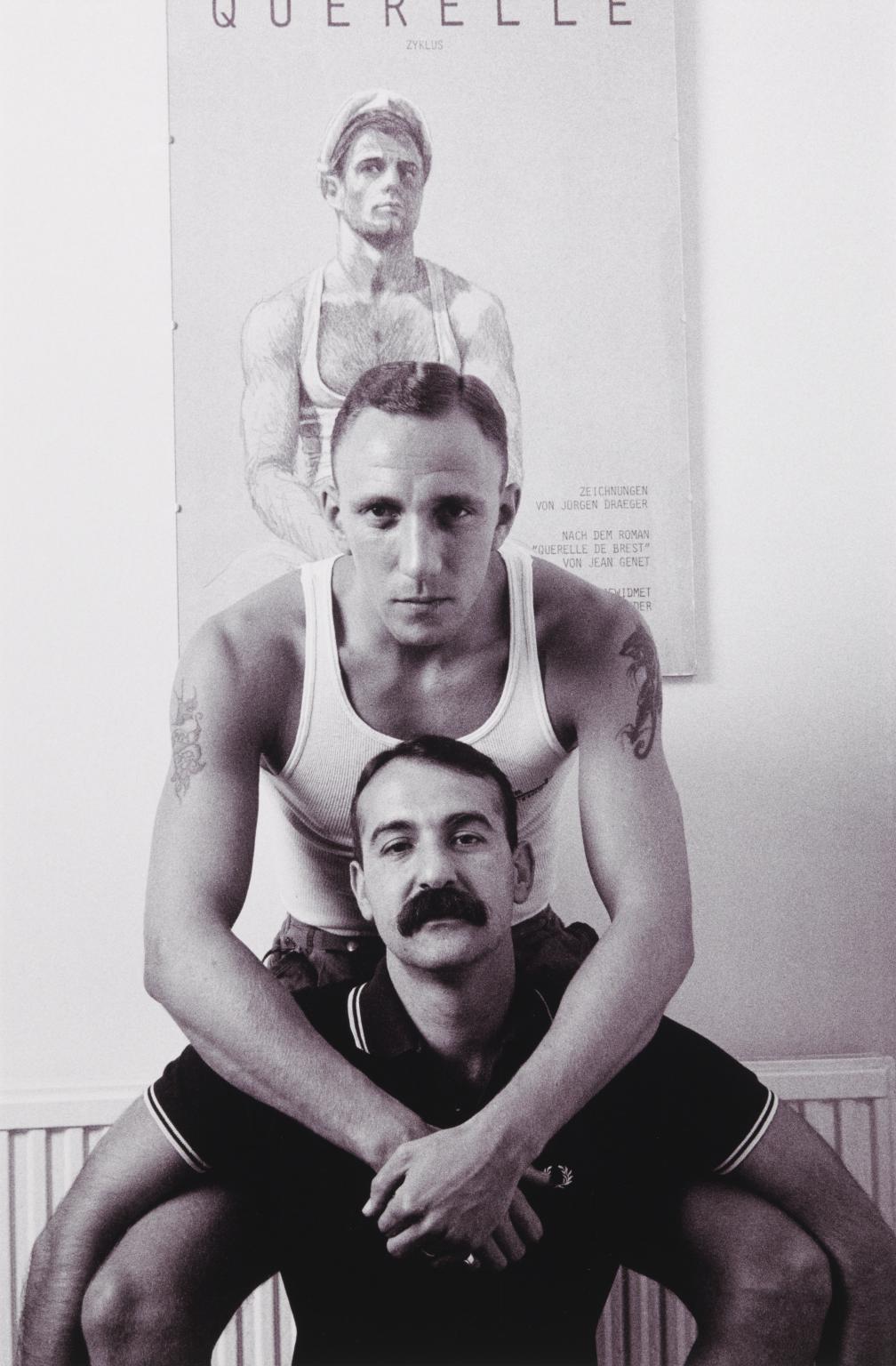
Sunil Gupta, Ian & Pavlik, London 1984, printed 2018
This series of black and white portraits features gay and lesbian couples from Sunil Gupta’s social circles in London and Newcastle. Called Lovers: Ten Years On, the project was shot over a period of two years from 1984–6, following the end of Gupta’s own ten-year relationship. Reminiscent of traditional family portraits, the photographs show couples in affectionate poses in their own living spaces. Prejudicial coverage of the HIV and AIDS epidemic in the 1980s threatened to turn public opinion against the acceptance of queer relationships, which were portrayed as ‘sexually deviant’. In contrast to these offensive depictions of queer love, the people in Lovers: Ten Years On are often presented as quite ordinary, middle-class, professional couples. Many of the people photographed would later lose their lives to HIV and AIDS.
Gallery label, January 2025
30/30
artworks in Sixty Years: The Unfinished Conversation
Art in this room


Sorry, no image available



























You've viewed 6/30 artworks
You've viewed 30/30 artworks
